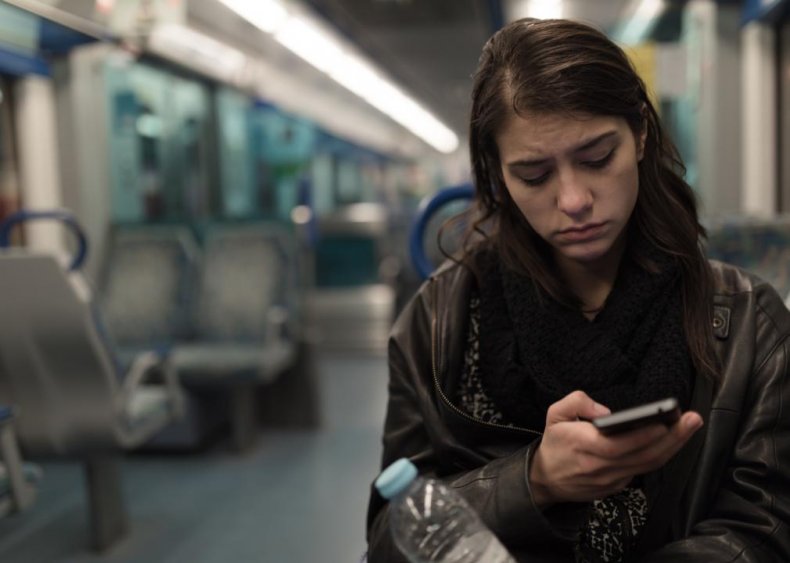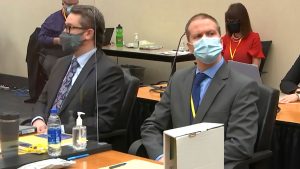It’s now been more than a year since the COVID-19 pandemic drastically changed the lives of people around the world. The virus brought immense feelings of stress, worry, fear, anger, loneliness, and for many, grief.
Sunday Citizen used data from the U.S. Census Bureau’s Household Pulse Survey, which collected responses biweekly between April 2020 and February 2021, to compile statistics on anxiety, depression, and mental health activities in every state and Washington D.C. The data from this story covers two periods of time during the pandemic: April 23 to May 5, 2020 and Feb. 17 to March 1, 2021, with the most recent dataset released on March 10, 2021.
The Census Bureau uses representative sample sizes and population estimates to determine the people’s frequency of anxiety and depression per week in every state, as well as the percentage of the population that receives therapy or takes prescription medication. The frequency rates are categorized as follows: “rarely” means no days at all, “occasionally” means several days a week, “frequently” means more than half of the week, and “did not report” means that data was not available for that percentage of the population.
Continue reading for statistics surrounding mental health in your state during COVID-19.
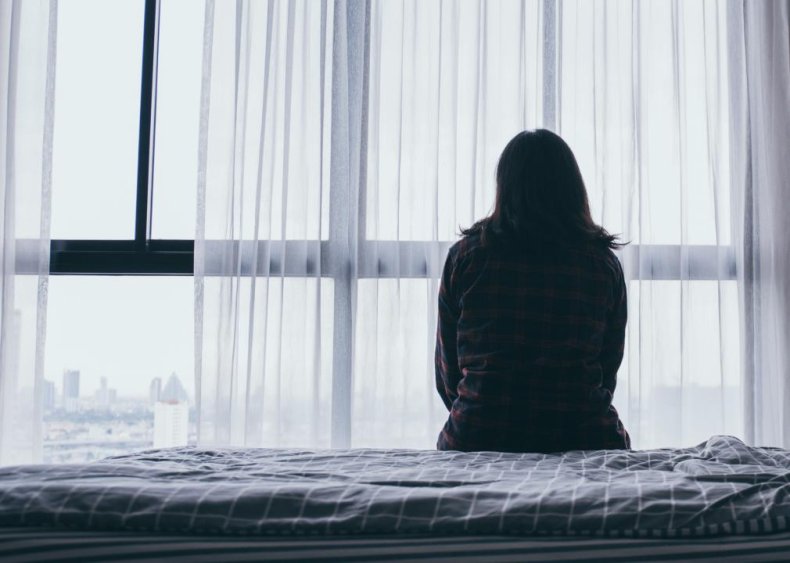
Alabama
– Frequency of feeling depressed or hopeless (Feb. 2021):
— Rarely: 40.5% (-11.6% from April 2020),
— Occasionally: 19.5% (-4.3% from April 2020),
— Frequently: 10.1% (+2.8% from April 2020),
— Nearly everyday: 8.9% (+3.0% from April 2020),
— Did not report: 21.1% (+10.1% from April 2020)
– Frequency of feeling anxious or on edge (Feb. 2021):
— Rarely: 32.0% (-5.4% from April 2020),
— Occasionally: 25.4% (-4.4% from April 2020),
— Frequently: 8.9% (-1.3% from April 2020),
— Nearly everyday: 12.7% (+1.1% from April 2020),
— Did not report: 21.1% (+10.0% from April 2020)
– Received counseling or therapy (Feb. 2021): yes: 6.9%, no: 70.8%, did not report: 22.4%
– Took prescription medication to help with mental health (Feb. 2021): yes: 17.9%, no: 60.0%, did not report: 22.2%

Alaska
– Frequency of feeling depressed or hopeless (Feb. 2021):
— Rarely: 37.2% (-17.4% from April 2020),
— Occasionally: 29.0% (+6.5% from April 2020),
— Frequently: 9.7% (+1.7% from April 2020),
— Nearly everyday: 9.1% (+2.1% from April 2020),
— Did not report: 15.1% (+7.1% from April 2020)
– Frequency of feeling anxious or on edge (Feb. 2021):
— Rarely: 32.4% (-4.1% from April 2020),
— Occasionally: 27.2% (-3.2% from April 2020),
— Frequently: 11.5% (+2.1% from April 2020),
— Nearly everyday: 14.1% (-1.6% from April 2020),
— Did not report: 14.8% (+6.8% from April 2020)
– Received counseling or therapy (Feb. 2021): yes: 10.5%, no: 73.0%, did not report: 16.5%
– Took prescription medication to help with mental health (Feb. 2021): yes: 14.5%, no: 69.1%, did not report: 16.4%
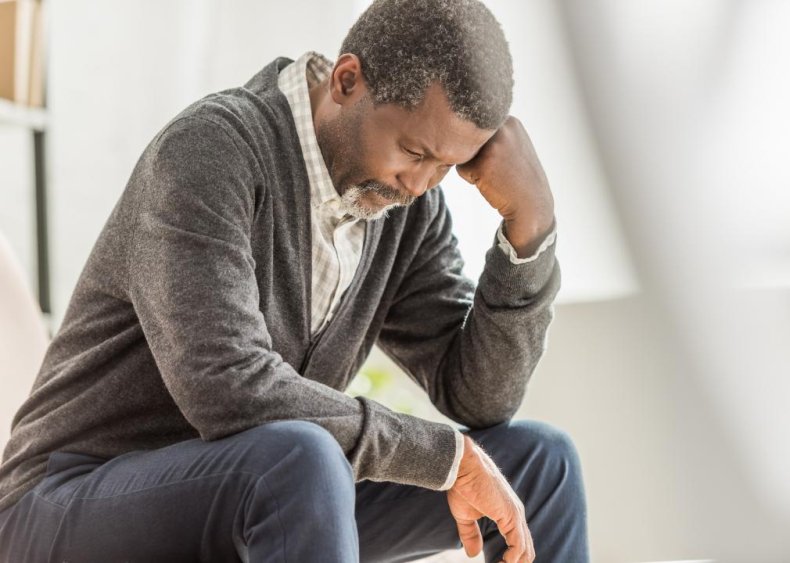
Arizona
– Frequency of feeling depressed or hopeless (Feb. 2021):
— Rarely: 40.6% (-6.3% from April 2020),
— Occasionally: 21.9% (-3.6% from April 2020),
— Frequently: 9.0% (-0.2% from April 2020),
— Nearly everyday: 8.8% (+1.1% from April 2020),
— Did not report: 19.7% (+9.1% from April 2020)
– Frequency of feeling anxious or on edge (Feb. 2021):
— Rarely: 31.9% (-0.8% from April 2020),
— Occasionally: 23.6% (-6.0% from April 2020),
— Frequently: 9.7% (-4.1% from April 2020),
— Nearly everyday: 15.1% (+1.8% from April 2020),
— Did not report: 19.7% (+9.0% from April 2020)
– Received counseling or therapy (Feb. 2021): yes: 5.9%, no: 72.6%, did not report: 21.5%
– Took prescription medication to help with mental health (Feb. 2021): yes: 15.0%, no: 63.3%, did not report: 21.6%
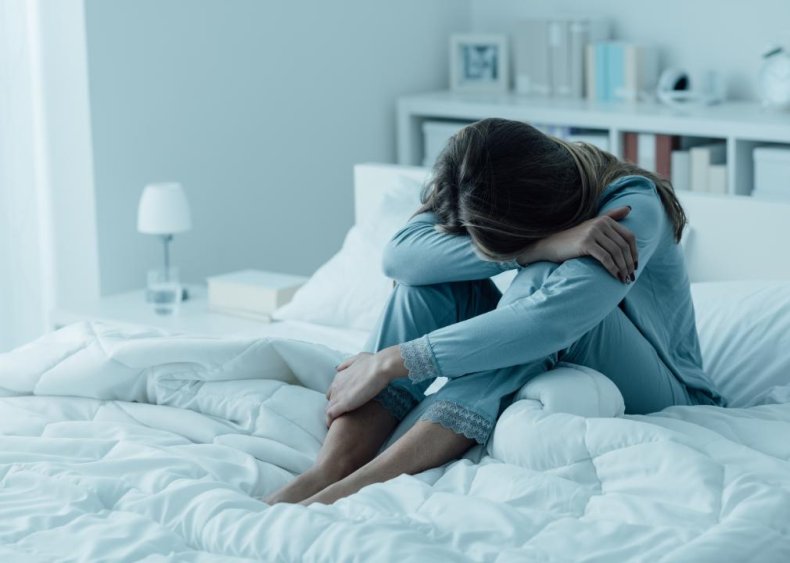
Arkansas
– Frequency of feeling depressed or hopeless (Feb. 2021):
— Rarely: 37.0% (-7.0% from April 2020),
— Occasionally: 23.0% (-2.4% from April 2020),
— Frequently: 9.0% (+0.9% from April 2020),
— Nearly everyday: 9.6% (+0.2% from April 2020),
— Did not report: 21.4% (+8.3% from April 2020)
– Frequency of feeling anxious or on edge (Feb. 2021):
— Rarely: 30.3% (-1.2% from April 2020),
— Occasionally: 23.3% (-4.0% from April 2020),
— Frequently: 9.6% (-2.9% from April 2020),
— Nearly everyday: 16.0% (+0.4% from April 2020),
— Did not report: 20.8% (+7.7% from April 2020)
– Received counseling or therapy (Feb. 2021): yes: 9.5%, no: 67.6%, did not report: 22.9%
– Took prescription medication to help with mental health (Feb. 2021): yes: 20.8%, no: 56.5%, did not report: 22.7%
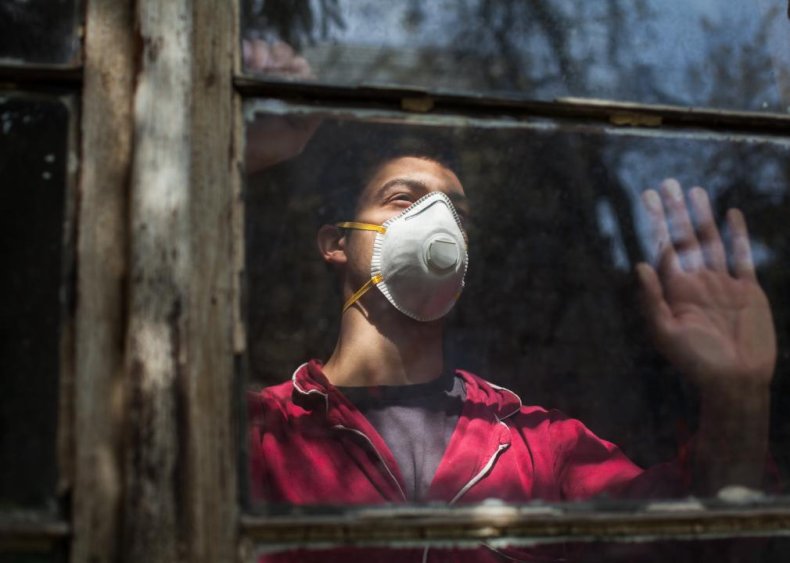
California
– Frequency of feeling depressed or hopeless (Feb. 2021):
— Rarely: 33.8% (-12.8% from April 2020),
— Occasionally: 24.1% (-3.1% from April 2020),
— Frequently: 9.4% (+0.9% from April 2020),
— Nearly everyday: 10.4% (+2.1% from April 2020),
— Did not report: 22.4% (+12.9% from April 2020)
– Frequency of feeling anxious or on edge (Feb. 2021):
— Rarely: 25.8% (-5.0% from April 2020),
— Occasionally: 25.1% (-7.9% from April 2020),
— Frequently: 10.6% (-1.9% from April 2020),
— Nearly everyday: 16.1% (+1.7% from April 2020),
— Did not report: 22.3% (+13.1% from April 2020)
– Received counseling or therapy (Feb. 2021): yes: 8.0%, no: 66.7%, did not report: 25.3%
– Took prescription medication to help with mental health (Feb. 2021): yes: 14.0%, no: 61.0%, did not report: 25.0%
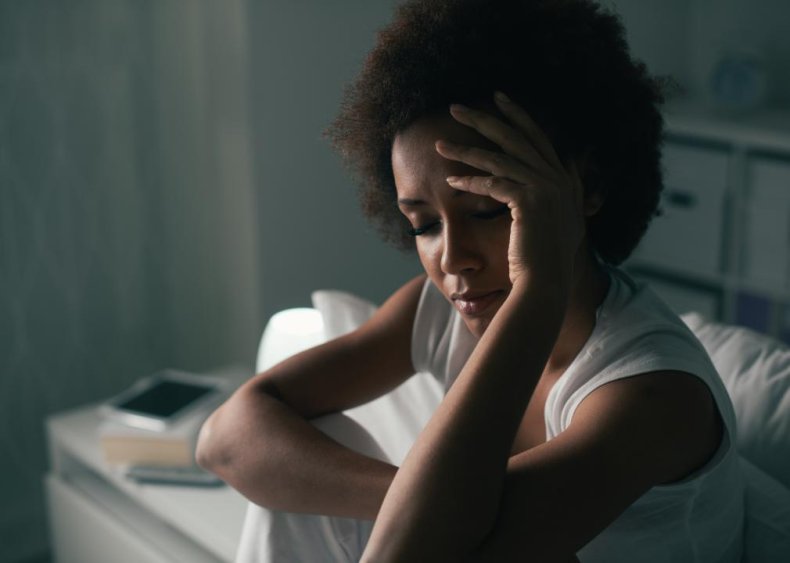
Colorado
– Frequency of feeling depressed or hopeless (Feb. 2021):
— Rarely: 40.5% (-8.5% from April 2020),
— Occasionally: 23.6% (-6.2% from April 2020),
— Frequently: 9.6% (+1.1% from April 2020),
— Nearly everyday: 9.8% (+3.1% from April 2020),
— Did not report: 16.5% (+10.4% from April 2020)
– Frequency of feeling anxious or on edge (Feb. 2021):
— Rarely: 29.9% (-3.2% from April 2020),
— Occasionally: 26.9% (-4.5% from April 2020),
— Frequently: 11.4% (-1.1% from April 2020),
— Nearly everyday: 15.6% (-1.5% from April 2020),
— Did not report: 16.2% (+10.3% from April 2020)
– Received counseling or therapy (Feb. 2021): yes: 8.4%, no: 73.5%, did not report: 18.1%
– Took prescription medication to help with mental health (Feb. 2021): yes: 17.4%, no: 64.3%, did not report: 18.3%
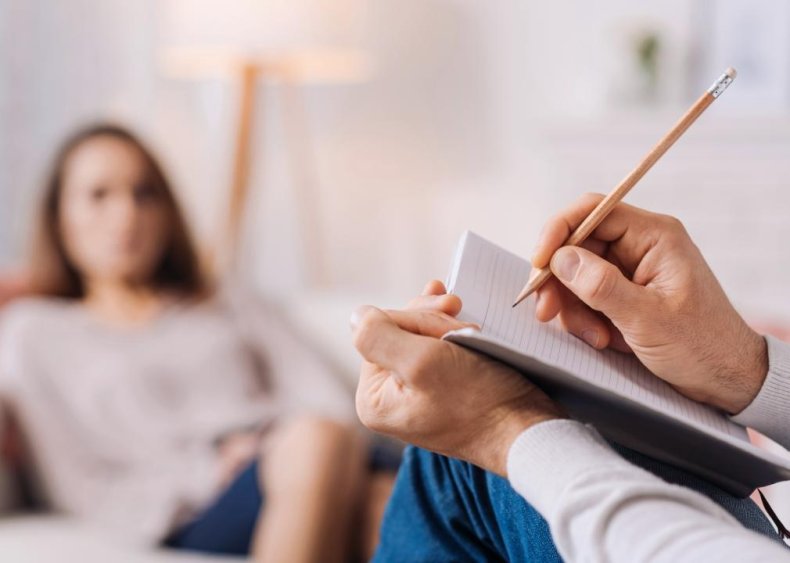
Connecticut
– Frequency of feeling depressed or hopeless (Feb. 2021):
— Rarely: 36.1% (-11.1% from April 2020),
— Occasionally: 24.8% (-1.2% from April 2020),
— Frequently: 11.0% (+1.8% from April 2020),
— Nearly everyday: 8.7% (+2.1% from April 2020),
— Did not report: 19.5% (+8.4% from April 2020)
– Frequency of feeling anxious or on edge (Feb. 2021):
— Rarely: 26.3% (-0.8% from April 2020),
— Occasionally: 25.9% (-7.6% from April 2020),
— Frequently: 10.0% (-1.9% from April 2020),
— Nearly everyday: 18.6% (+2.7% from April 2020),
— Did not report: 19.3% (+7.7% from April 2020)
– Received counseling or therapy (Feb. 2021): yes: 12.8%, no: 65.2%, did not report: 22.0%
– Took prescription medication to help with mental health (Feb. 2021): yes: 19.3%, no: 58.8%, did not report: 21.8%
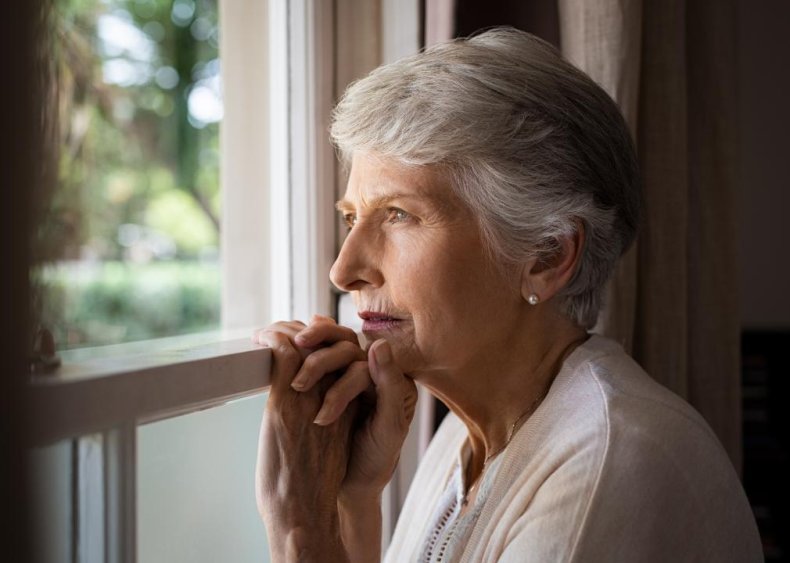
Delaware
– Frequency of feeling depressed or hopeless (Feb. 2021):
— Rarely: 43.5% (-9.5% from April 2020),
— Occasionally: 21.2% (-2.7% from April 2020),
— Frequently: 6.5% (-1.8% from April 2020),
— Nearly everyday: 8.2% (+1.9% from April 2020),
— Did not report: 20.7% (+12.0% from April 2020)
– Frequency of feeling anxious or on edge (Feb. 2021):
— Rarely: 32.5% (+0.8% from April 2020),
— Occasionally: 23.8% (-8.9% from April 2020),
— Frequently: 8.8% (-1.6% from April 2020),
— Nearly everyday: 14.2% (-1.7% from April 2020),
— Did not report: 20.6% (+11.4% from April 2020)
– Received counseling or therapy (Feb. 2021): yes: 9.6%, no: 67.5%, did not report: 22.9%
– Took prescription medication to help with mental health (Feb. 2021): yes: 19.6%, no: 57.0%, did not report: 23.4%
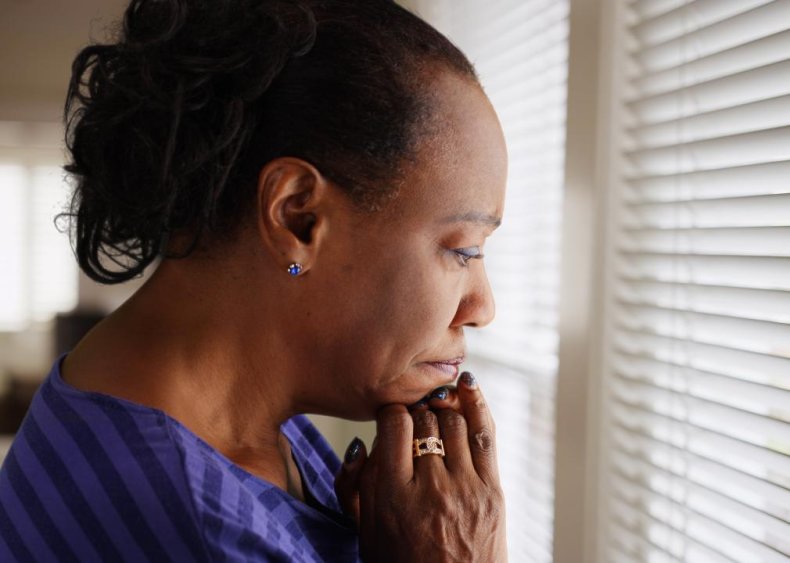
Florida
– Frequency of feeling depressed or hopeless (Feb. 2021):
— Rarely: 37.0% (-12.0% from April 2020),
— Occasionally: 22.3% (-3.3% from April 2020),
— Frequently: 7.7% (-1.4% from April 2020),
— Nearly everyday: 8.5% (+1.7% from April 2020),
— Did not report: 24.5% (+15.0% from April 2020)
– Frequency of feeling anxious or on edge (Feb. 2021):
— Rarely: 30.7% (-4.9% from April 2020),
— Occasionally: 22.4% (-4.9% from April 2020),
— Frequently: 8.7% (-4.0% from April 2020),
— Nearly everyday: 14.1% (-0.8% from April 2020),
— Did not report: 24.1% (+14.6% from April 2020)
– Received counseling or therapy (Feb. 2021): yes: 5.6%, no: 67.8%, did not report: 26.6%
– Took prescription medication to help with mental health (Feb. 2021): yes: 12.5%, no: 60.9%, did not report: 26.6%
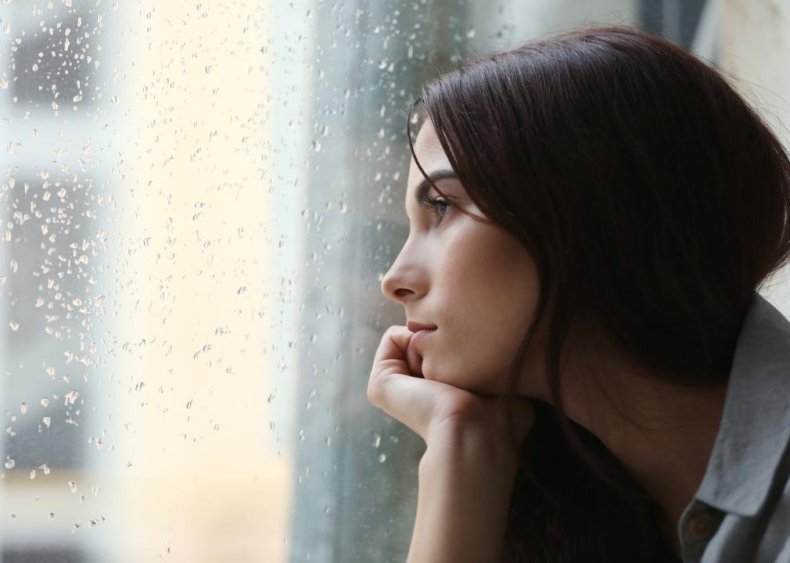
Georgia
– Frequency of feeling depressed or hopeless (Feb. 2021):
— Rarely: 34.0% (-12.1% from April 2020),
— Occasionally: 22.8% (-1.1% from April 2020),
— Frequently: 7.6% (-3.5% from April 2020),
— Nearly everyday: 10.6% (+2.9% from April 2020),
— Did not report: 25.1% (+13.8% from April 2020)
– Frequency of feeling anxious or on edge (Feb. 2021):
— Rarely: 28.5% (-5.0% from April 2020),
— Occasionally: 21.0% (-6.6% from April 2020),
— Frequently: 9.5% (-2.3% from April 2020),
— Nearly everyday: 16.0% (+0.4% from April 2020),
— Did not report: 25.0% (+13.5% from April 2020)
– Received counseling or therapy (Feb. 2021): yes: 8.0%, no: 65.0%, did not report: 27.0%
– Took prescription medication to help with mental health (Feb. 2021): yes: 17.9%, no: 55.2%, did not report: 26.9%
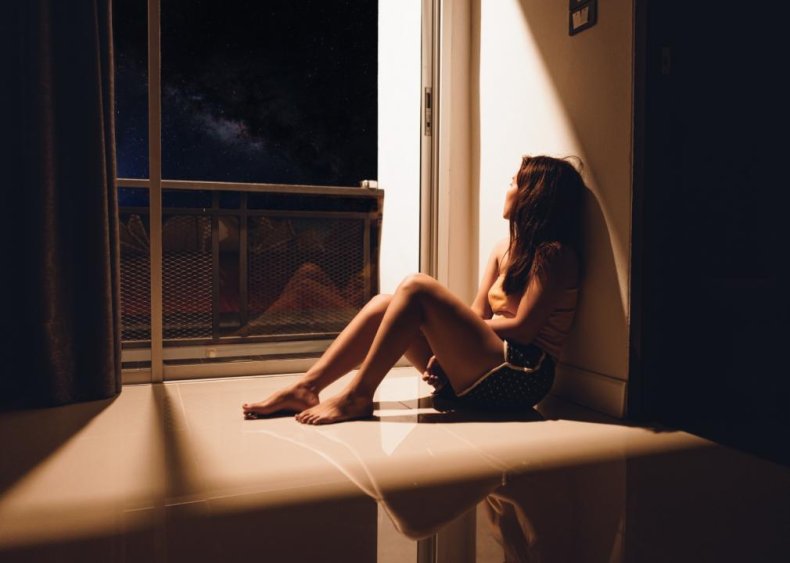
Hawaii
– Frequency of feeling depressed or hopeless (Feb. 2021):
— Rarely: 42.7% (-2.4% from April 2020),
— Occasionally: 25.4% (-8.3% from April 2020),
— Frequently: 7.7% (+0.5% from April 2020),
— Nearly everyday: 8.5% (+2.4% from April 2020),
— Did not report: 15.7% (+7.8% from April 2020)
– Frequency of feeling anxious or on edge (Feb. 2021):
— Rarely: 31.1% (+1.1% from April 2020),
— Occasionally: 27.7% (-5.0% from April 2020),
— Frequently: 12.2% (-2.9% from April 2020),
— Nearly everyday: 13.3% (+0.1% from April 2020),
— Did not report: 15.7% (+6.7% from April 2020)
– Received counseling or therapy (Feb. 2021): yes: 8.8%, no: 74.7%, did not report: 16.5%
– Took prescription medication to help with mental health (Feb. 2021): yes: 10.2%, no: 73.1%, did not report: 16.7%
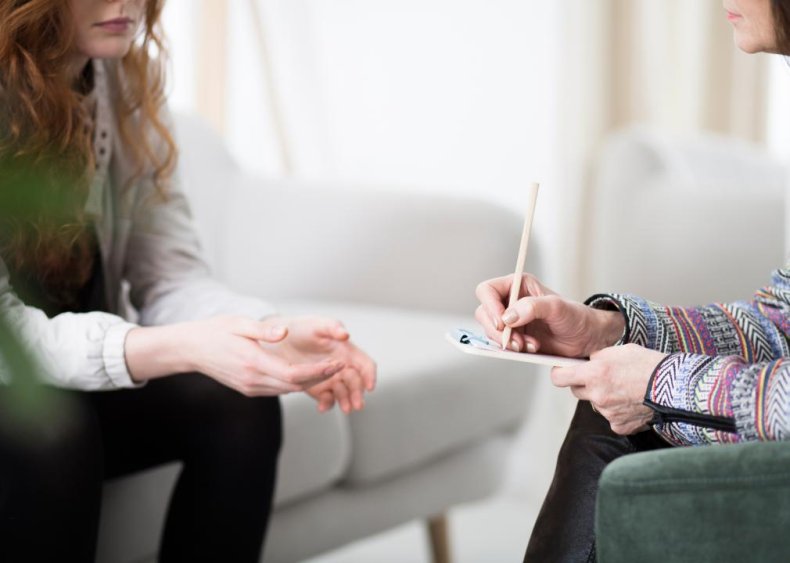
Idaho
– Frequency of feeling depressed or hopeless (Feb. 2021):
— Rarely: 41.8% (-11.7% from April 2020),
— Occasionally: 23.5% (-3.4% from April 2020),
— Frequently: 7.9% (+0.7% from April 2020),
— Nearly everyday: 9.1% (+2.5% from April 2020),
— Did not report: 17.7% (+11.9% from April 2020)
– Frequency of feeling anxious or on edge (Feb. 2021):
— Rarely: 33.6% (-5.5% from April 2020),
— Occasionally: 25.8% (-5.3% from April 2020),
— Frequently: 10.5% (-2.3% from April 2020),
— Nearly everyday: 12.8% (+1.6% from April 2020),
— Did not report: 17.4% (+11.5% from April 2020)
– Received counseling or therapy (Feb. 2021): yes: 9.4%, no: 71.3%, did not report: 19.3%
– Took prescription medication to help with mental health (Feb. 2021): yes: 19.0%, no: 61.7%, did not report: 19.3%
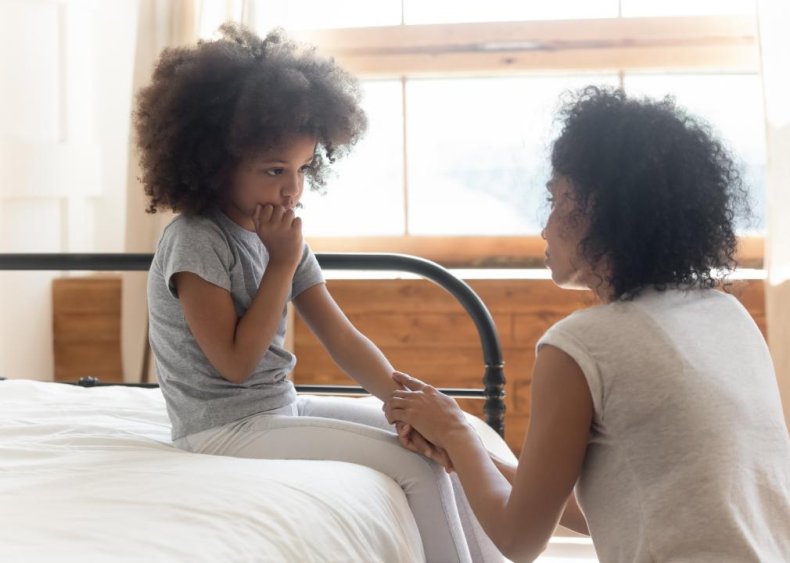
Illinois
– Frequency of feeling depressed or hopeless (Feb. 2021):
— Rarely: 35.3% (-9.4% from April 2020),
— Occasionally: 23.8% (-3.1% from April 2020),
— Frequently: 8.2% (-0.9% from April 2020),
— Nearly everyday: 9.9% (+2.2% from April 2020),
— Did not report: 22.8% (+11.2% from April 2020)
– Frequency of feeling anxious or on edge (Feb. 2021):
— Rarely: 28.9% (-3.0% from April 2020),
— Occasionally: 24.3% (-4.8% from April 2020),
— Frequently: 10.6% (-3.3% from April 2020),
— Nearly everyday: 13.6% (+0.2% from April 2020),
— Did not report: 22.5% (+10.8% from April 2020)
– Received counseling or therapy (Feb. 2021): yes: 8.6%, no: 67.1%, did not report: 24.4%
– Took prescription medication to help with mental health (Feb. 2021): yes: 15.4%, no: 59.8%, did not report: 24.9%
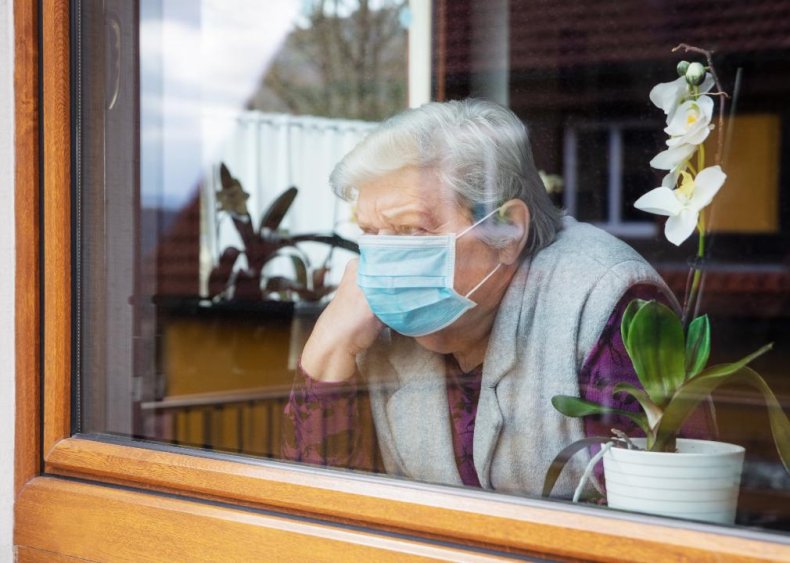
Indiana
– Frequency of feeling depressed or hopeless (Feb. 2021):
— Rarely: 39.1% (-6.5% from April 2020),
— Occasionally: 23.7% (-4.0% from April 2020),
— Frequently: 11.3% (+1.5% from April 2020),
— Nearly everyday: 8.1% (-0.4% from April 2020),
— Did not report: 17.8% (+9.4% from April 2020)
– Frequency of feeling anxious or on edge (Feb. 2021):
— Rarely: 31.2% (-2.5% from April 2020),
— Occasionally: 24.7% (-4.3% from April 2020),
— Frequently: 12.9% (-0.3% from April 2020),
— Nearly everyday: 13.4% (-1.9% from April 2020),
— Did not report: 17.8% (+9.1% from April 2020)
– Received counseling or therapy (Feb. 2021): yes: 7.1%, no: 72.7%, did not report: 20.3%
– Took prescription medication to help with mental health (Feb. 2021): yes: 20.5%, no: 58.9%, did not report: 20.5%
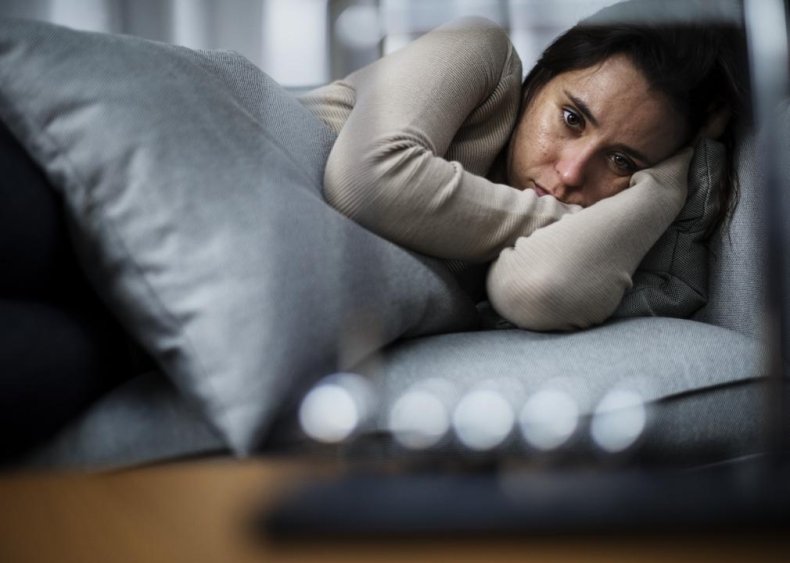
Iowa
– Frequency of feeling depressed or hopeless (Feb. 2021):
— Rarely: 39.6% (-13.0% from April 2020),
— Occasionally: 23.5% (-5.3% from April 2020),
— Frequently: 8.0% (+2.5% from April 2020),
— Nearly everyday: 7.9% (+2.1% from April 2020),
— Did not report: 21.0% (+13.8% from April 2020)
– Frequency of feeling anxious or on edge (Feb. 2021):
— Rarely: 32.3% (-3.7% from April 2020),
— Occasionally: 24.6% (-11.3% from April 2020),
— Frequently: 9.4% (-0.2% from April 2020),
— Nearly everyday: 13.1% (+2.0% from April 2020),
— Did not report: 20.6% (+13.2% from April 2020)
– Received counseling or therapy (Feb. 2021): yes: 8.6%, no: 69.0%, did not report: 22.4%
– Took prescription medication to help with mental health (Feb. 2021): yes: 19.1%, no: 58.3%, did not report: 22.5%
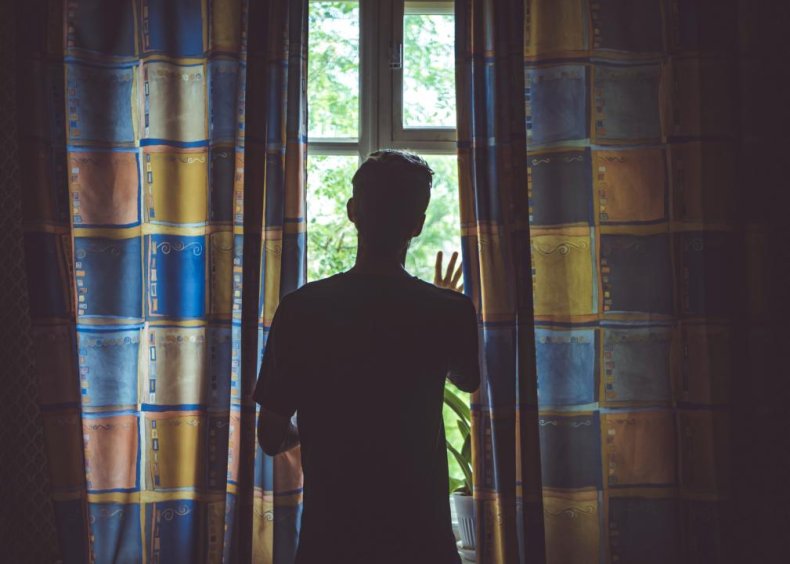
Kansas
– Frequency of feeling depressed or hopeless (Feb. 2021):
— Rarely: 43.4% (-6.4% from April 2020),
— Occasionally: 20.7% (-4.9% from April 2020),
— Frequently: 7.1% (-3.8% from April 2020),
— Nearly everyday: 9.8% (+3.4% from April 2020),
— Did not report: 18.9% (+11.7% from April 2020)
– Frequency of feeling anxious or on edge (Feb. 2021):
— Rarely: 35.1% (-7.1% from April 2020),
— Occasionally: 24.0% (-4.2% from April 2020),
— Frequently: 8.8% (-2.9% from April 2020),
— Nearly everyday: 13.4% (+3.0% from April 2020),
— Did not report: 18.7% (+11.2% from April 2020)
– Received counseling or therapy (Feb. 2021): yes: 8.3%, no: 71.2%, did not report: 20.5%
– Took prescription medication to help with mental health (Feb. 2021): yes: 20.6%, no: 59.0%, did not report: 20.4%
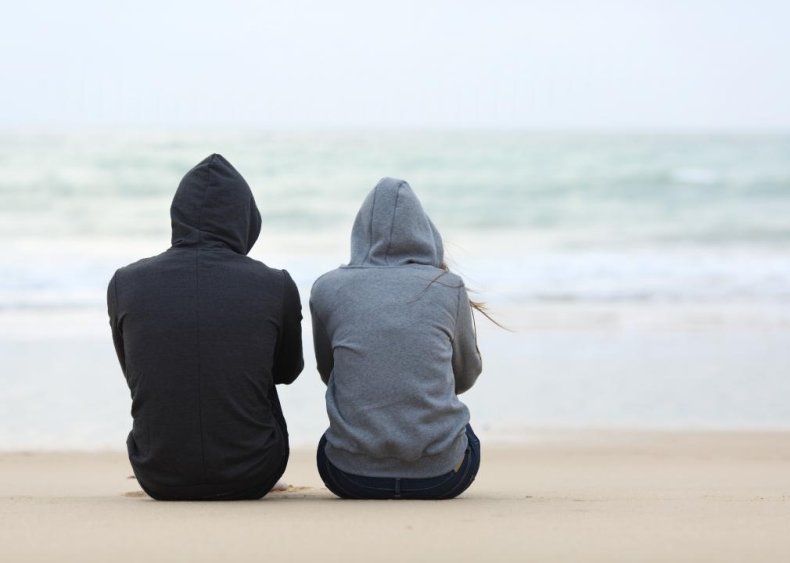
Kentucky
– Frequency of feeling depressed or hopeless (Feb. 2021):
— Rarely: 32.0% (-11.9% from April 2020),
— Occasionally: 27.4% (-4.0% from April 2020),
— Frequently: 10.8% (+1.4% from April 2020),
— Nearly everyday: 9.8% (+2.0% from April 2020),
— Did not report: 19.9% (+12.6% from April 2020)
– Frequency of feeling anxious or on edge (Feb. 2021):
— Rarely: 26.1% (-6.4% from April 2020),
— Occasionally: 23.7% (-8.0% from April 2020),
— Frequently: 11.2% (-1.2% from April 2020),
— Nearly everyday: 19.3% (+3.4% from April 2020),
— Did not report: 19.7% (+12.2% from April 2020)
– Received counseling or therapy (Feb. 2021): yes: 6.5%, no: 70.9%, did not report: 22.6%
– Took prescription medication to help with mental health (Feb. 2021): yes: 21.0%, no: 56.7%, did not report: 22.4%
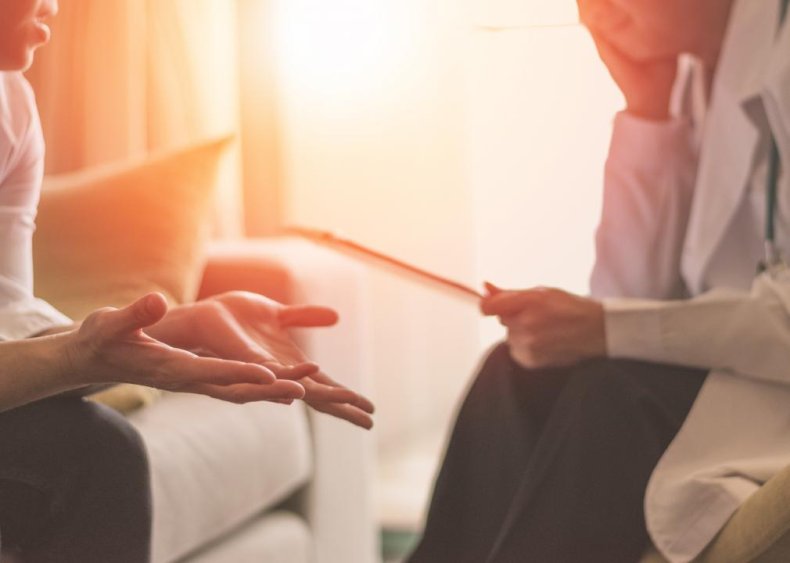
Louisiana
– Frequency of feeling depressed or hopeless (Feb. 2021):
— Rarely: 33.3% (-10.6% from April 2020),
— Occasionally: 22.6% (-3.0% from April 2020),
— Frequently: 9.1% (-0.6% from April 2020),
— Nearly everyday: 11.3% (+1.5% from April 2020),
— Did not report: 23.7% (+12.7% from April 2020)
– Frequency of feeling anxious or on edge (Feb. 2021):
— Rarely: 28.2% (-1.7% from April 2020),
— Occasionally: 19.8% (-9.6% from April 2020),
— Frequently: 8.6% (-3.6% from April 2020),
— Nearly everyday: 19.8% (+2.3% from April 2020),
— Did not report: 23.6% (+12.7% from April 2020)
– Received counseling or therapy (Feb. 2021): yes: 6.6%, no: 68.1%, did not report: 25.3%
– Took prescription medication to help with mental health (Feb. 2021): yes: 17.0%, no: 57.6%, did not report: 25.3%
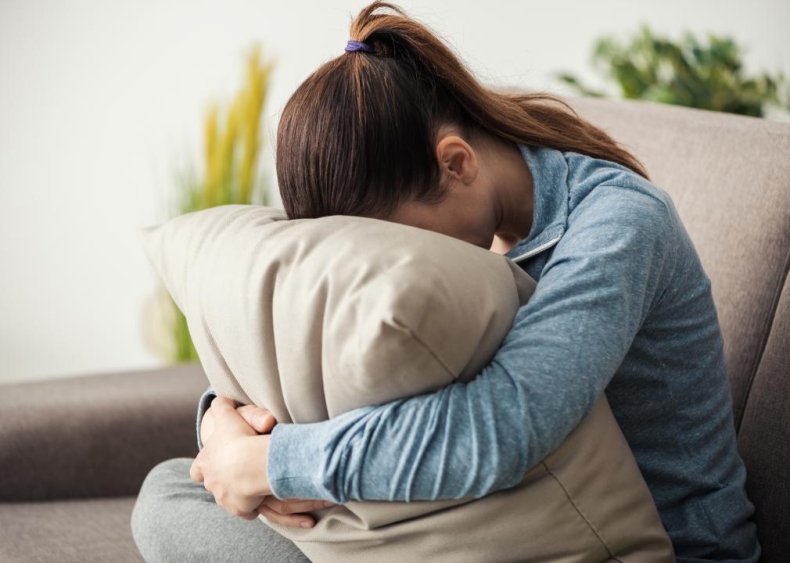
Maine
– Frequency of feeling depressed or hopeless (Feb. 2021):
— Rarely: 39.8% (-11.6% from April 2020),
— Occasionally: 22.1% (-5.2% from April 2020),
— Frequently: 8.8% (+2.0% from April 2020),
— Nearly everyday: 7.8% (+1.2% from April 2020),
— Did not report: 21.5% (+13.6% from April 2020)
– Frequency of feeling anxious or on edge (Feb. 2021):
— Rarely: 29.6% (-4.5% from April 2020),
— Occasionally: 22.4% (-9.1% from April 2020),
— Frequently: 9.0% (-3.6% from April 2020),
— Nearly everyday: 17.4% (+3.6% from April 2020),
— Did not report: 21.6% (+13.6% from April 2020)
– Received counseling or therapy (Feb. 2021): yes: 8.9%, no: 68.4%, did not report: 22.7%
– Took prescription medication to help with mental health (Feb. 2021): yes: 19.4%, no: 57.7%, did not report: 22.9%
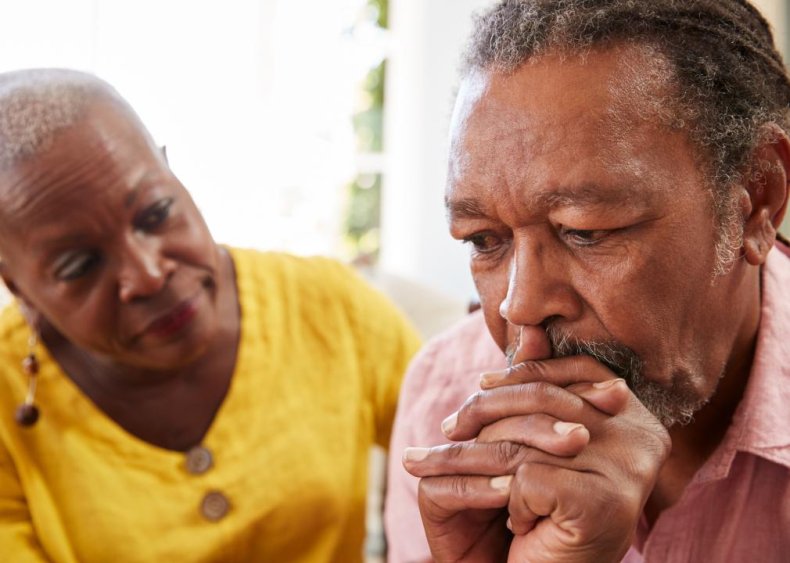
Maryland
– Frequency of feeling depressed or hopeless (Feb. 2021):
— Rarely: 40.0% (-4.5% from April 2020),
— Occasionally: 22.4% (-8.1% from April 2020),
— Frequently: 7.5% (-0.5% from April 2020),
— Nearly everyday: 8.8% (+1.6% from April 2020),
— Did not report: 21.4% (+11.5% from April 2020)
– Frequency of feeling anxious or on edge (Feb. 2021):
— Rarely: 30.5% (-1.5% from April 2020),
— Occasionally: 22.0% (-10.7% from April 2020),
— Frequently: 12.3% (+0.3% from April 2020),
— Nearly everyday: 14.2% (+0.8% from April 2020),
— Did not report: 21.0% (+11.2% from April 2020)
– Received counseling or therapy (Feb. 2021): yes: 9.0%, no: 66.7%, did not report: 24.3%
– Took prescription medication to help with mental health (Feb. 2021): yes: 14.4%, no: 61.1%, did not report: 24.4%
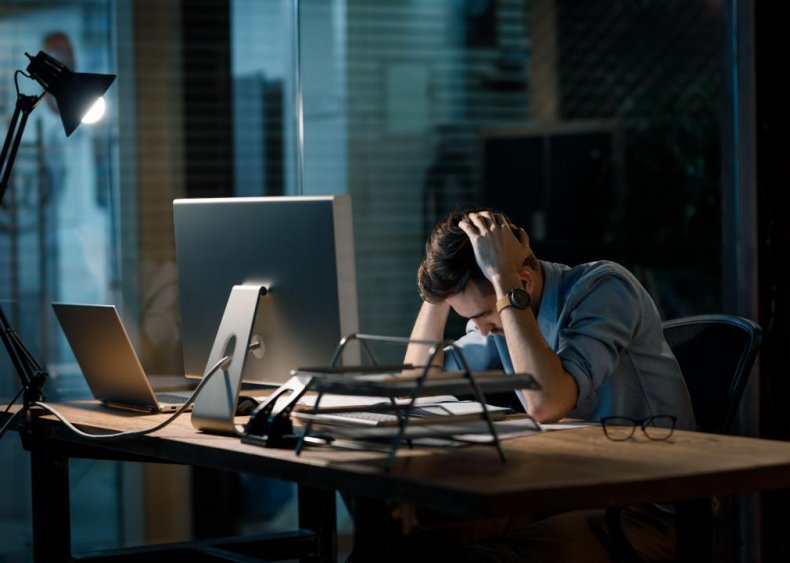
Massachusetts
– Frequency of feeling depressed or hopeless (Feb. 2021):
— Rarely: 36.0% (-6.2% from April 2020),
— Occasionally: 24.3% (-4.6% from April 2020),
— Frequently: 9.6% (-1.3% from April 2020),
— Nearly everyday: 7.4% (-1.5% from April 2020),
— Did not report: 22.7% (+13.7% from April 2020)
– Frequency of feeling anxious or on edge (Feb. 2021):
— Rarely: 26.0% (+2.1% from April 2020),
— Occasionally: 27.1% (-7.6% from April 2020),
— Frequently: 10.2% (-2.8% from April 2020),
— Nearly everyday: 14.4% (-5.1% from April 2020),
— Did not report: 22.4% (+13.3% from April 2020)
– Received counseling or therapy (Feb. 2021): yes: 14.0%, no: 61.5%, did not report: 24.6%
– Took prescription medication to help with mental health (Feb. 2021): yes: 18.5%, no: 57.0%, did not report: 24.6%
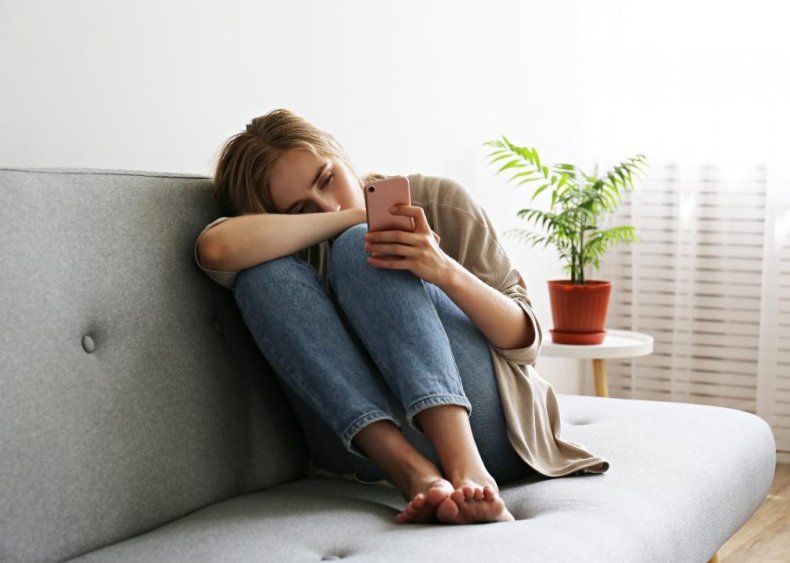
Michigan
– Frequency of feeling depressed or hopeless (Feb. 2021):
— Rarely: 35.2% (-10.1% from April 2020),
— Occasionally: 24.0% (-1.6% from April 2020),
— Frequently: 8.1% (-2.1% from April 2020),
— Nearly everyday: 7.8% (-1.2% from April 2020),
— Did not report: 24.9% (+14.9% from April 2020)
– Frequency of feeling anxious or on edge (Feb. 2021):
— Rarely: 26.7% (-6.5% from April 2020),
— Occasionally: 24.6% (-5.5% from April 2020),
— Frequently: 9.5% (-1.6% from April 2020),
— Nearly everyday: 14.6% (-1.5% from April 2020),
— Did not report: 24.7% (+15.2% from April 2020)
– Received counseling or therapy (Feb. 2021): yes: 8.4%, no: 64.5%, did not report: 27.0%
– Took prescription medication to help with mental health (Feb. 2021): yes: 16.0%, no: 56.6%, did not report: 27.3%
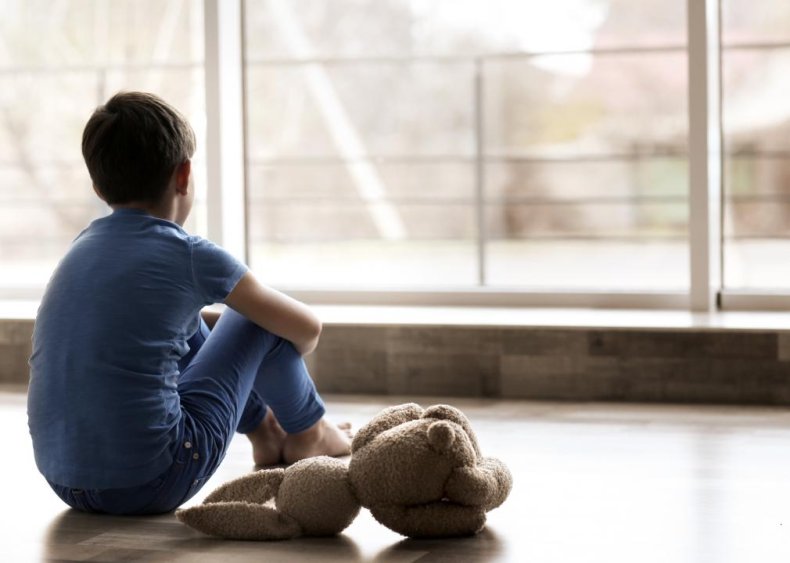
Minnesota
– Frequency of feeling depressed or hopeless (Feb. 2021):
— Rarely: 45.5% (-4.0% from April 2020),
— Occasionally: 20.6% (-7.6% from April 2020),
— Frequently: 6.4% (-0.9% from April 2020),
— Nearly everyday: 6.5% (-0.6% from April 2020),
— Did not report: 21.0% (+13.2% from April 2020)
– Frequency of feeling anxious or on edge (Feb. 2021):
— Rarely: 35.2% (-0.3% from April 2020),
— Occasionally: 24.0% (-7.0% from April 2020),
— Frequently: 8.0% (-3.9% from April 2020),
— Nearly everyday: 12.0% (-1.7% from April 2020),
— Did not report: 20.7% (+12.9% from April 2020)
– Received counseling or therapy (Feb. 2021): yes: 8.3%, no: 68.7%, did not report: 23.0%
– Took prescription medication to help with mental health (Feb. 2021): yes: 18.0%, no: 58.9%, did not report: 23.1%
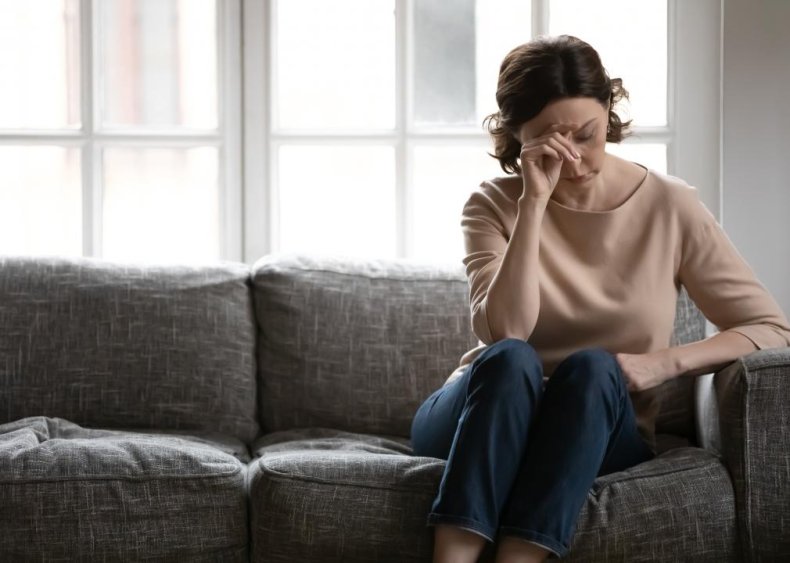
Mississippi
– Frequency of feeling depressed or hopeless (Feb. 2021):
— Rarely: 34.0% (-15.7% from April 2020),
— Occasionally: 21.4% (-0.6% from April 2020),
— Frequently: 6.8% (-1.8% from April 2020),
— Nearly everyday: 12.5% (+4.7% from April 2020),
— Did not report: 25.3% (+13.4% from April 2020)
– Frequency of feeling anxious or on edge (Feb. 2021):
— Rarely: 24.3% (-12.6% from April 2020),
— Occasionally: 20.1% (-6.3% from April 2020),
— Frequently: 9.9% (-2.8% from April 2020),
— Nearly everyday: 19.3% (+7.4% from April 2020),
— Did not report: 26.3% (+14.4% from April 2020)
– Received counseling or therapy (Feb. 2021): yes: 8.7%, no: 64.5%, did not report: 26.8%
– Took prescription medication to help with mental health (Feb. 2021): yes: 15.8%, no: 57.4%, did not report: 26.7%
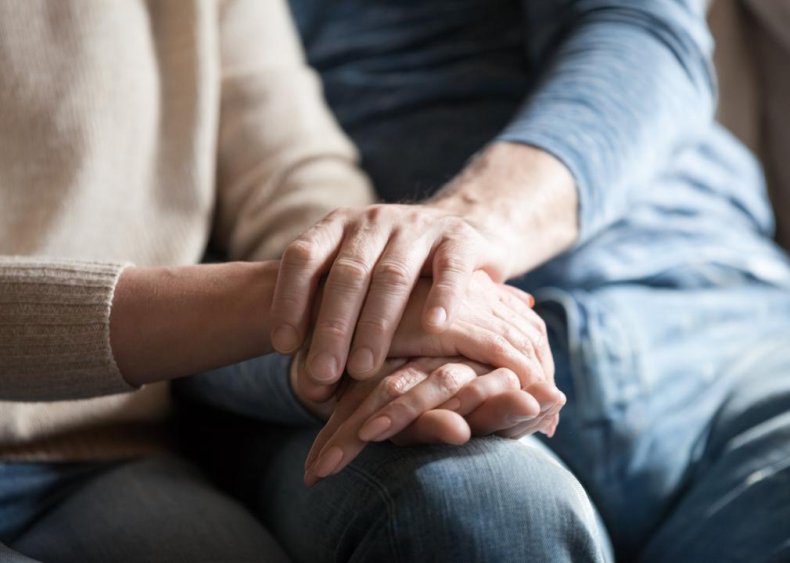
Missouri
– Frequency of feeling depressed or hopeless (Feb. 2021):
— Rarely: 35.9% (-13.3% from April 2020),
— Occasionally: 24.7% (-3.2% from April 2020),
— Frequently: 6.5% (-2.8% from April 2020),
— Nearly everyday: 9.3% (+1.6% from April 2020),
— Did not report: 23.6% (+17.6% from April 2020)
– Frequency of feeling anxious or on edge (Feb. 2021):
— Rarely: 27.7% (-10.6% from April 2020),
— Occasionally: 23.3% (-4.0% from April 2020),
— Frequently: 9.8% (-5.6% from April 2020),
— Nearly everyday: 16.0% (+3.0% from April 2020),
— Did not report: 23.2% (+17.1% from April 2020)
– Received counseling or therapy (Feb. 2021): yes: 6.1%, no: 69.8%, did not report: 24.2%
– Took prescription medication to help with mental health (Feb. 2021): yes: 17.6%, no: 57.7%, did not report: 24.7%

Montana
– Frequency of feeling depressed or hopeless (Feb. 2021):
— Rarely: 45.5% (-6.5% from April 2020),
— Occasionally: 24.4% (-3.5% from April 2020),
— Frequently: 5.8% (-1.4% from April 2020),
— Nearly everyday: 7.8% (+1.7% from April 2020),
— Did not report: 16.3% (+9.6% from April 2020)
– Frequency of feeling anxious or on edge (Feb. 2021):
— Rarely: 36.6% (+0.1% from April 2020),
— Occasionally: 25.9% (-9.2% from April 2020),
— Frequently: 9.3% (+0.3% from April 2020),
— Nearly everyday: 11.8% (-1.0% from April 2020),
— Did not report: 16.3% (+9.9% from April 2020)
– Received counseling or therapy (Feb. 2021): yes: 8.3%, no: 73.3%, did not report: 18.4%
– Took prescription medication to help with mental health (Feb. 2021): yes: 17.3%, no: 64.3%, did not report: 18.4%
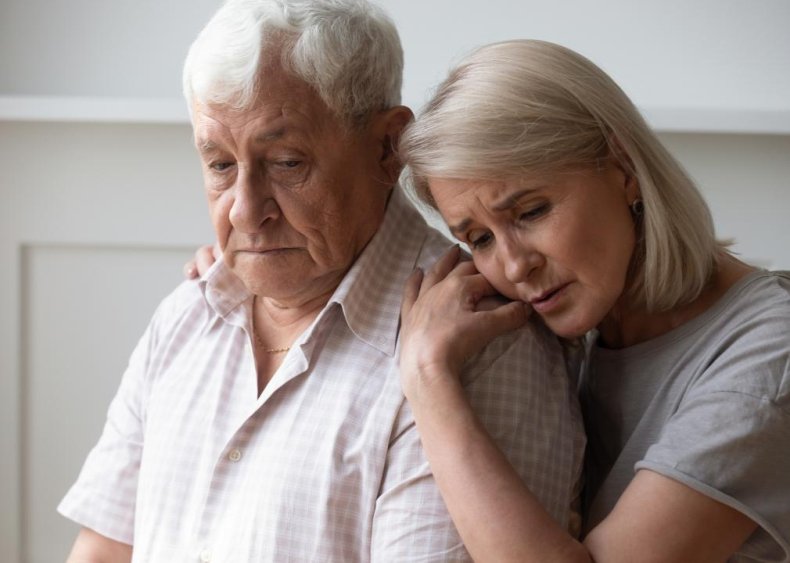
Nebraska
– Frequency of feeling depressed or hopeless (Feb. 2021):
— Rarely: 42.0% (-11.0% from April 2020),
— Occasionally: 23.9% (-0.8% from April 2020),
— Frequently: 5.9% (-2.1% from April 2020),
— Nearly everyday: 6.4% (-0.6% from April 2020),
— Did not report: 21.7% (+14.5% from April 2020)
– Frequency of feeling anxious or on edge (Feb. 2021):
— Rarely: 36.0% (-2.9% from April 2020),
— Occasionally: 25.8% (-5.4% from April 2020),
— Frequently: 8.3% (-2.7% from April 2020),
— Nearly everyday: 8.3% (-3.3% from April 2020),
— Did not report: 21.6% (+14.3% from April 2020)
– Received counseling or therapy (Feb. 2021): yes: 4.8%, no: 71.8%, did not report: 23.5%
– Took prescription medication to help with mental health (Feb. 2021): yes: 15.7%, no: 61.4%, did not report: 22.8%
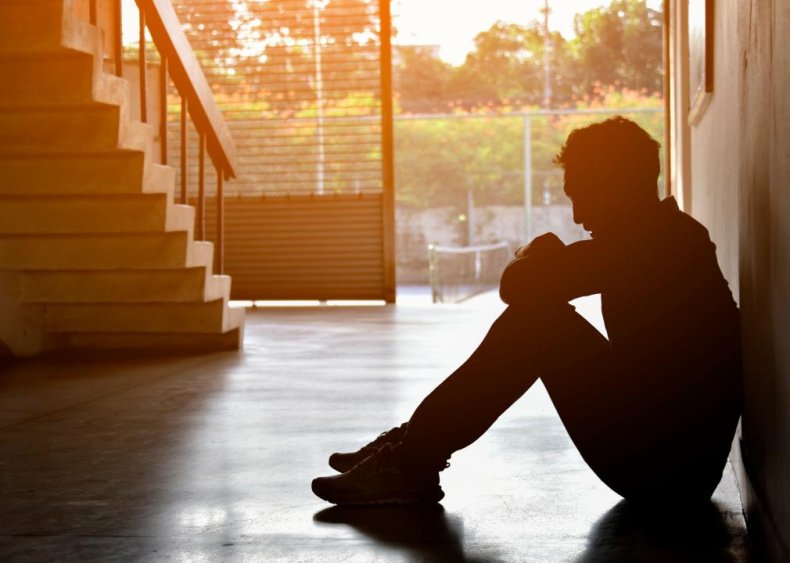
Nevada
– Frequency of feeling depressed or hopeless (Feb. 2021):
— Rarely: 32.8% (-11.6% from April 2020),
— Occasionally: 21.2% (-5.0% from April 2020),
— Frequently: 9.0% (-3.5% from April 2020),
— Nearly everyday: 14.3% (+4.8% from April 2020),
— Did not report: 22.7% (+15.3% from April 2020)
– Frequency of feeling anxious or on edge (Feb. 2021):
— Rarely: 25.7% (-9.9% from April 2020),
— Occasionally: 21.4% (-7.7% from April 2020),
— Frequently: 12.1% (-1.2% from April 2020),
— Nearly everyday: 18.1% (+3.5% from April 2020),
— Did not report: 22.6% (+15.2% from April 2020)
– Received counseling or therapy (Feb. 2021): yes: 6.3%, no: 69.3%, did not report: 24.4%
– Took prescription medication to help with mental health (Feb. 2021): yes: 13.7%, no: 61.7%, did not report: 24.6%
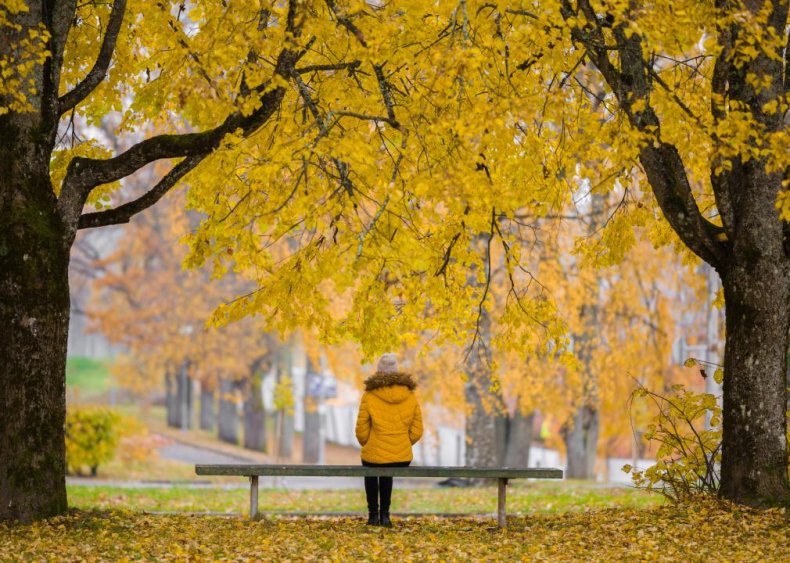
New Hampshire
– Frequency of feeling depressed or hopeless (Feb. 2021):
— Rarely: 39.8% (-11.0% from April 2020),
— Occasionally: 27.8% (+1.6% from April 2020),
— Frequently: 7.1% (+0.0% from April 2020),
— Nearly everyday: 8.2% (+0.9% from April 2020),
— Did not report: 17.2% (+8.5% from April 2020)
– Frequency of feeling anxious or on edge (Feb. 2021):
— Rarely: 34.1% (+1.8% from April 2020),
— Occasionally: 25.8% (-5.5% from April 2020),
— Frequently: 8.7% (-2.2% from April 2020),
— Nearly everyday: 14.2% (-3.0% from April 2020),
— Did not report: 17.3% (+8.9% from April 2020)
– Received counseling or therapy (Feb. 2021): yes: 9.2%, no: 72.8%, did not report: 18.1%
– Took prescription medication to help with mental health (Feb. 2021): yes: 19.2%, no: 62.8%, did not report: 18.0%
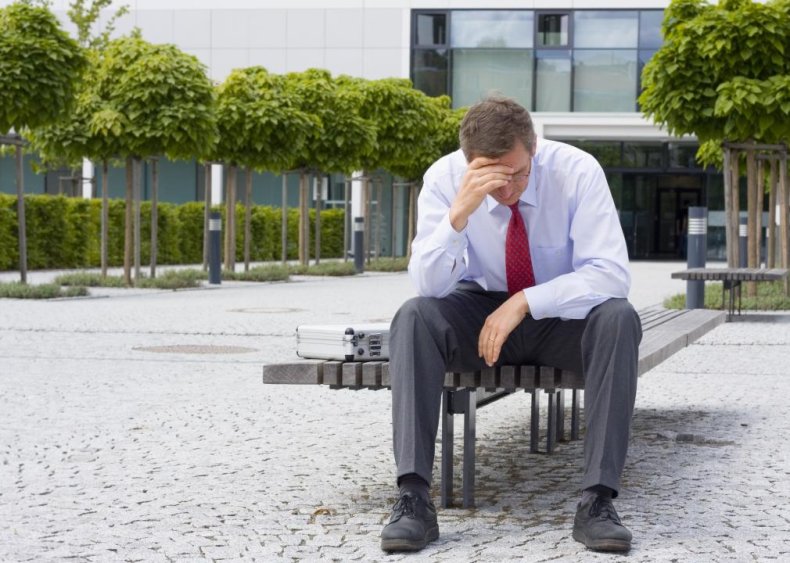
New Jersey
– Frequency of feeling depressed or hopeless (Feb. 2021):
— Rarely: 35.4% (-5.3% from April 2020),
— Occasionally: 24.9% (-7.5% from April 2020),
— Frequently: 8.4% (+0.5% from April 2020),
— Nearly everyday: 7.7% (-0.2% from April 2020),
— Did not report: 23.7% (+12.5% from April 2020)
– Frequency of feeling anxious or on edge (Feb. 2021):
— Rarely: 26.5% (-1.7% from April 2020),
— Occasionally: 26.6% (-7.4% from April 2020),
— Frequently: 10.1% (-2.4% from April 2020),
— Nearly everyday: 13.3% (-0.9% from April 2020),
— Did not report: 23.5% (+12.4% from April 2020)
– Received counseling or therapy (Feb. 2021): yes: 6.8%, no: 66.7%, did not report: 26.4%
– Took prescription medication to help with mental health (Feb. 2021): yes: 11.3%, no: 62.6%, did not report: 26.2%
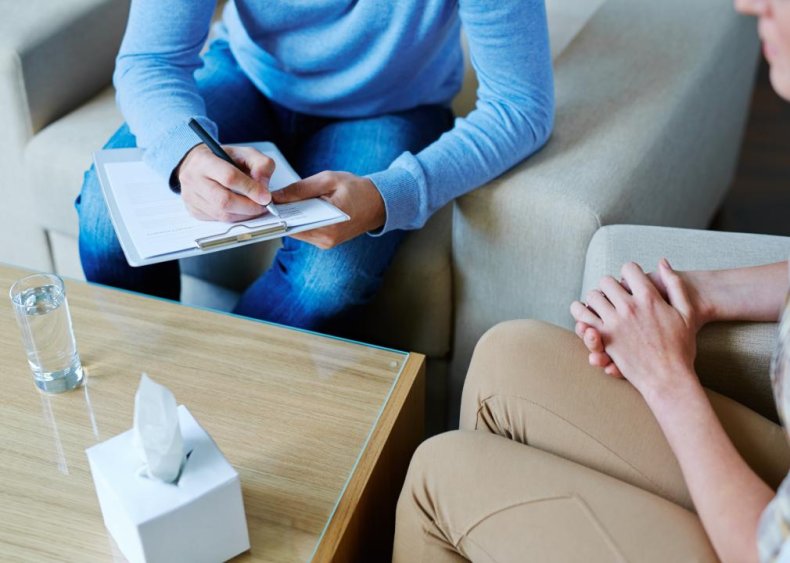
New Mexico
– Frequency of feeling depressed or hopeless (Feb. 2021):
— Rarely: 33.9% (-14.7% from April 2020),
— Occasionally: 28.8% (+1.6% from April 2020),
— Frequently: 8.8% (-0.5% from April 2020),
— Nearly everyday: 10.3% (+4.6% from April 2020),
— Did not report: 18.1% (+9.0% from April 2020)
– Frequency of feeling anxious or on edge (Feb. 2021):
— Rarely: 27.7% (-5.0% from April 2020),
— Occasionally: 28.0% (-5.8% from April 2020),
— Frequently: 11.5% (+2.7% from April 2020),
— Nearly everyday: 14.7% (-0.9% from April 2020),
— Did not report: 18.2% (+9.1% from April 2020)
– Received counseling or therapy (Feb. 2021): yes: 7.5%, no: 73.1%, did not report: 19.4%
– Took prescription medication to help with mental health (Feb. 2021): yes: 18.3%, no: 62.2%, did not report: 19.5%
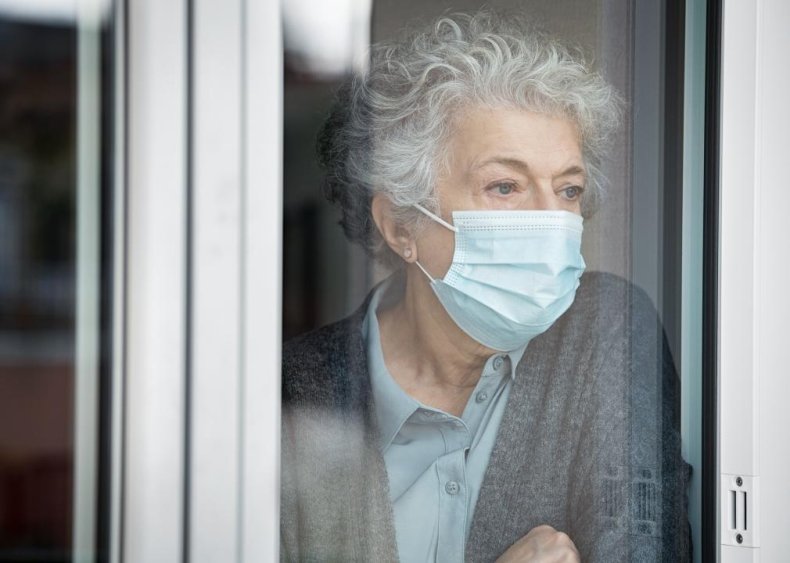
New York
– Frequency of feeling depressed or hopeless (Feb. 2021):
— Rarely: 37.0% (-3.0% from April 2020),
— Occasionally: 23.9% (-4.6% from April 2020),
— Frequently: 7.7% (-4.0% from April 2020),
— Nearly everyday: 9.4% (+0.5% from April 2020),
— Did not report: 21.9% (+11.1% from April 2020)
– Frequency of feeling anxious or on edge (Feb. 2021):
— Rarely: 26.9% (-1.2% from April 2020),
— Occasionally: 25.9% (-3.6% from April 2020),
— Frequently: 9.0% (-7.2% from April 2020),
— Nearly everyday: 16.4% (+1.2% from April 2020),
— Did not report: 21.7% (+10.7% from April 2020)
– Received counseling or therapy (Feb. 2021): yes: 7.7%, no: 68.2%, did not report: 24.2%
– Took prescription medication to help with mental health (Feb. 2021): yes: 14.0%, no: 62.0%, did not report: 24.0%
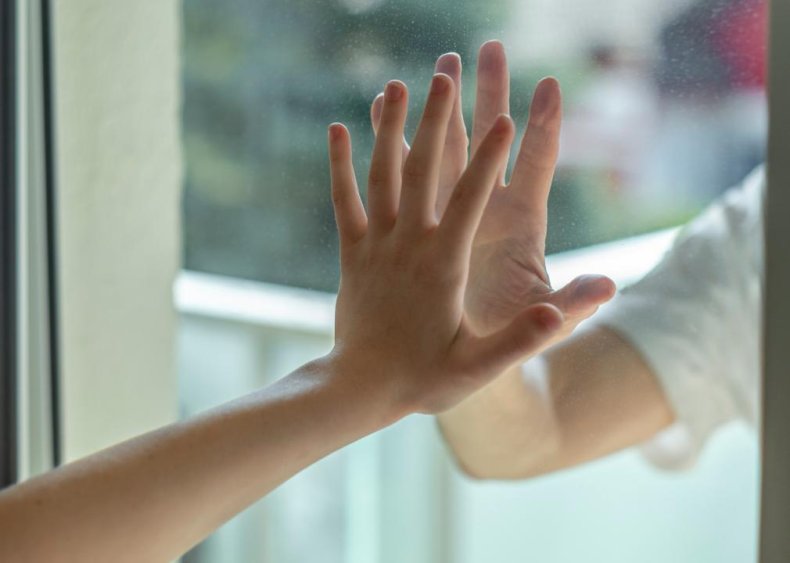
North Carolina
– Frequency of feeling depressed or hopeless (Feb. 2021):
— Rarely: 36.9% (-10.8% from April 2020),
— Occasionally: 22.7% (-5.0% from April 2020),
— Frequently: 9.5% (+3.3% from April 2020),
— Nearly everyday: 9.5% (+0.9% from April 2020),
— Did not report: 21.4% (+11.7% from April 2020)
– Frequency of feeling anxious or on edge (Feb. 2021):
— Rarely: 29.6% (-3.3% from April 2020),
— Occasionally: 24.7% (-7.2% from April 2020),
— Frequently: 10.1% (-1.0% from April 2020),
— Nearly everyday: 14.1% (-0.1% from April 2020),
— Did not report: 21.4% (+11.7% from April 2020)
– Received counseling or therapy (Feb. 2021): yes: 7.8%, no: 68.1%, did not report: 24.2%
– Took prescription medication to help with mental health (Feb. 2021): yes: 18.8%, no: 57.1%, did not report: 24.1%
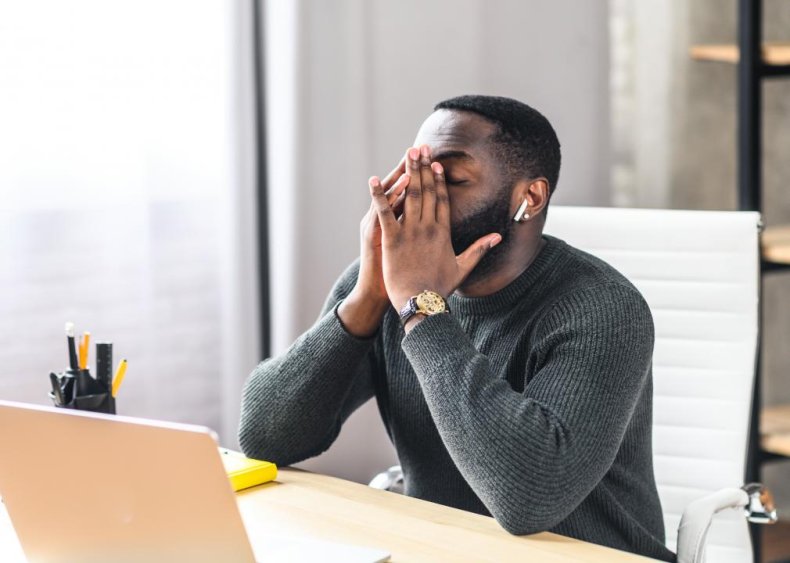
North Dakota
– Frequency of feeling depressed or hopeless (Feb. 2021):
— Rarely: 47.2% (+2.0% from April 2020),
— Occasionally: 21.6% (-10.0% from April 2020),
— Frequently: 4.7% (-4.2% from April 2020),
— Nearly everyday: 6.9% (+2.6% from April 2020),
— Did not report: 19.6% (+9.6% from April 2020)
– Frequency of feeling anxious or on edge (Feb. 2021):
— Rarely: 38.3% (+0.7% from April 2020),
— Occasionally: 22.5% (-10.5% from April 2020),
— Frequently: 8.8% (-1.3% from April 2020),
— Nearly everyday: 10.4% (+1.2% from April 2020),
— Did not report: 20.0% (+9.9% from April 2020)
– Received counseling or therapy (Feb. 2021): yes: 8.8%, no: 70.2%, did not report: 21.0%
– Took prescription medication to help with mental health (Feb. 2021): yes: 20.7%, no: 58.2%, did not report: 21.1%
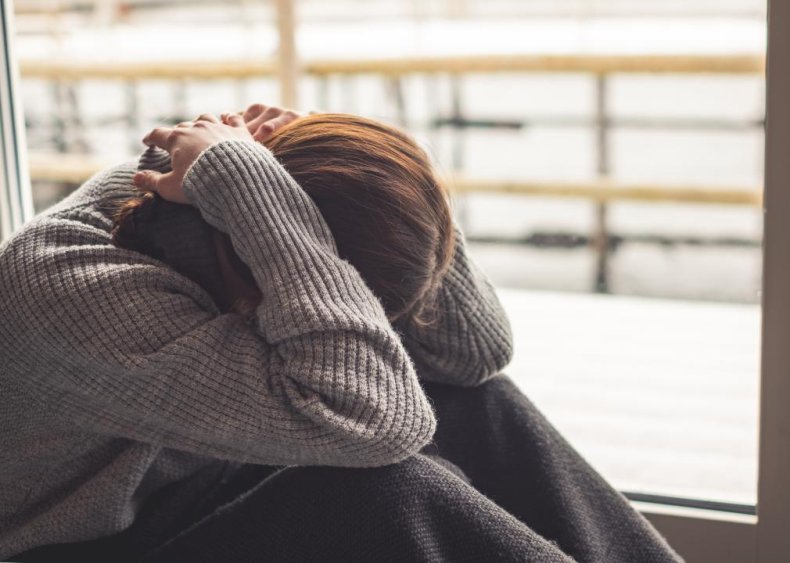
Ohio
– Frequency of feeling depressed or hopeless (Feb. 2021):
— Rarely: 38.7% (-7.3% from April 2020),
— Occasionally: 20.9% (-8.6% from April 2020),
— Frequently: 7.9% (+0.8% from April 2020),
— Nearly everyday: 10.7% (+1.7% from April 2020),
— Did not report: 21.9% (+13.5% from April 2020)
– Frequency of feeling anxious or on edge (Feb. 2021):
— Rarely: 31.6% (-0.4% from April 2020),
— Occasionally: 20.2% (-11.9% from April 2020),
— Frequently: 8.7% (-3.6% from April 2020),
— Nearly everyday: 17.7% (+2.6% from April 2020),
— Did not report: 21.8% (+13.4% from April 2020)
– Received counseling or therapy (Feb. 2021): yes: 8.4%, no: 66.9%, did not report: 24.8%
– Took prescription medication to help with mental health (Feb. 2021): yes: 16.6%, no: 58.4%, did not report: 25.0%
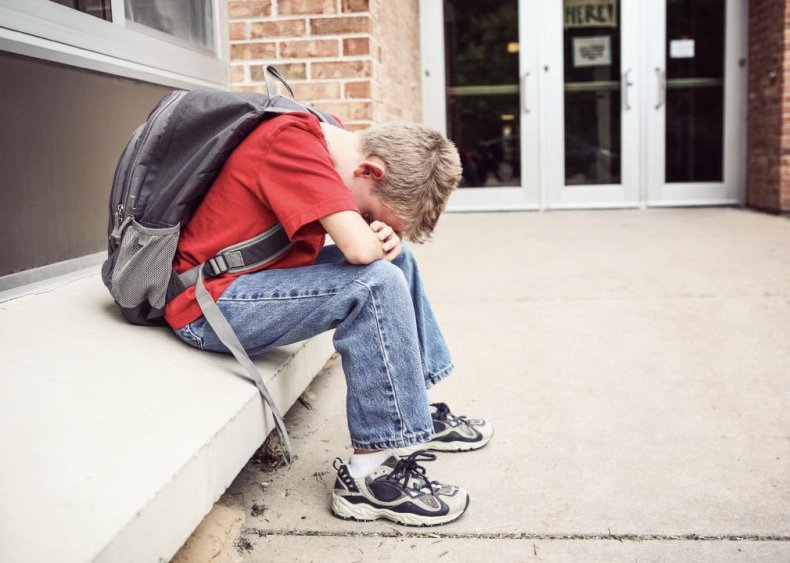
Oklahoma
– Frequency of feeling depressed or hopeless (Feb. 2021):
— Rarely: 34.9% (-14.3% from April 2020),
— Occasionally: 24.2% (-2.7% from April 2020),
— Frequently: 8.0% (+0.2% from April 2020),
— Nearly everyday: 10.8% (+3.6% from April 2020),
— Did not report: 22.0% (+13.2% from April 2020)
– Frequency of feeling anxious or on edge (Feb. 2021):
— Rarely: 25.9% (-7.7% from April 2020),
— Occasionally: 24.2% (-8.5% from April 2020),
— Frequently: 11.3% (+0.1% from April 2020),
— Nearly everyday: 16.7% (+3.1% from April 2020),
— Did not report: 21.9% (+13.0% from April 2020)
– Received counseling or therapy (Feb. 2021): yes: 6.3%, no: 71.4%, did not report: 22.2%
– Took prescription medication to help with mental health (Feb. 2021): yes: 18.0%, no: 59.8%, did not report: 22.2%
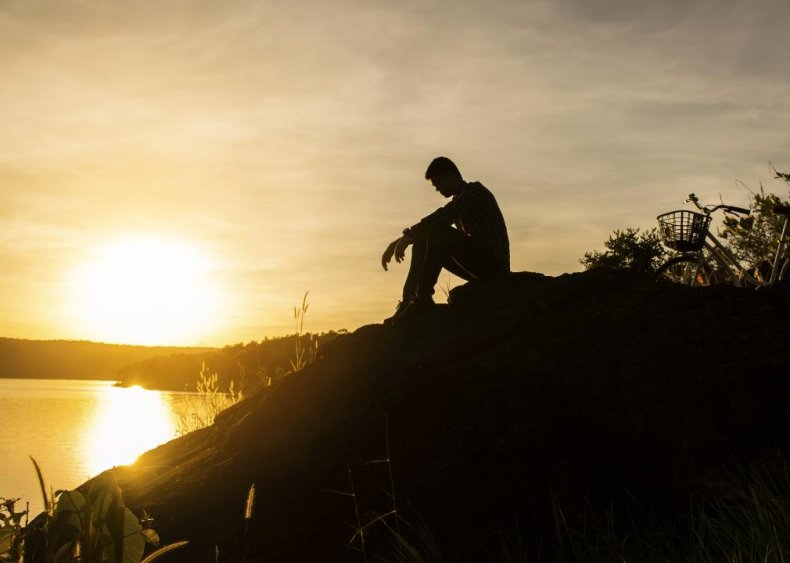
Oregon
– Frequency of feeling depressed or hopeless (Feb. 2021):
— Rarely: 37.7% (-7.1% from April 2020),
— Occasionally: 27.8% (-4.1% from April 2020),
— Frequently: 10.5% (+1.7% from April 2020),
— Nearly everyday: 9.3% (+1.8% from April 2020),
— Did not report: 14.6% (+7.6% from April 2020)
– Frequency of feeling anxious or on edge (Feb. 2021):
— Rarely: 26.8% (-3.5% from April 2020),
— Occasionally: 27.6% (-5.7% from April 2020),
— Frequently: 13.2% (+0.4% from April 2020),
— Nearly everyday: 18.0% (+1.5% from April 2020),
— Did not report: 14.5% (+7.5% from April 2020)
– Received counseling or therapy (Feb. 2021): yes: 10.3%, no: 74.2%, did not report: 15.5%
– Took prescription medication to help with mental health (Feb. 2021): yes: 17.6%, no: 66.8%, did not report: 15.6%
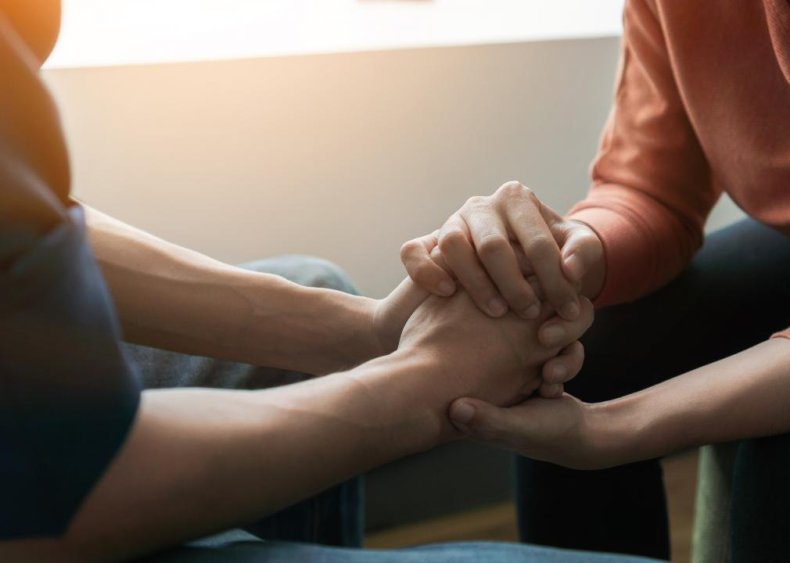
Pennsylvania
– Frequency of feeling depressed or hopeless (Feb. 2021):
— Rarely: 37.3% (-7.8% from April 2020),
— Occasionally: 23.3% (-4.5% from April 2020),
— Frequently: 8.8% (-0.1% from April 2020),
— Nearly everyday: 9.3% (+0.2% from April 2020),
— Did not report: 21.3% (+12.1% from April 2020)
– Frequency of feeling anxious or on edge (Feb. 2021):
— Rarely: 27.5% (-3.3% from April 2020),
— Occasionally: 25.8% (-6.6% from April 2020),
— Frequently: 10.3% (-0.2% from April 2020),
— Nearly everyday: 15.1% (-2.1% from April 2020),
— Did not report: 21.3% (+12.2% from April 2020)
– Received counseling or therapy (Feb. 2021): yes: 8.6%, no: 68.8%, did not report: 22.6%
– Took prescription medication to help with mental health (Feb. 2021): yes: 19.6%, no: 57.3%, did not report: 23.1%
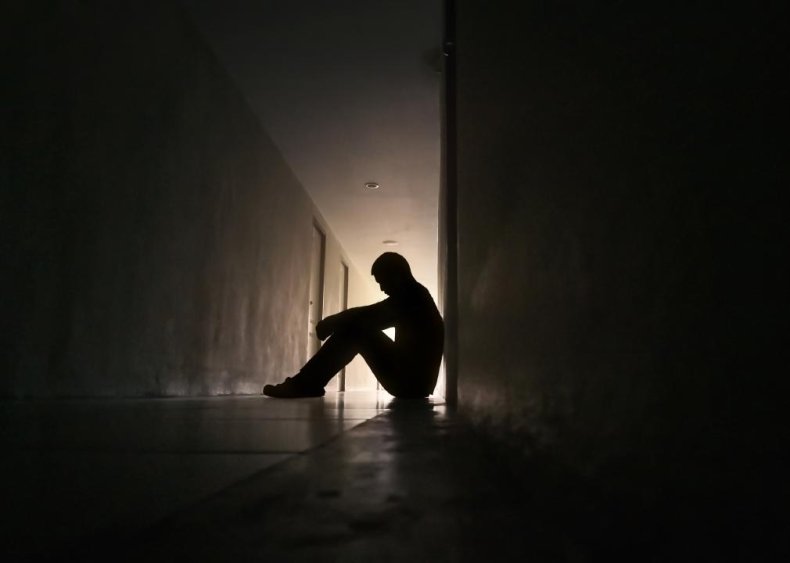
Rhode Island
– Frequency of feeling depressed or hopeless (Feb. 2021):
— Rarely: 34.7% (-13.0% from April 2020),
— Occasionally: 22.9% (-0.8% from April 2020),
— Frequently: 9.0% (-2.1% from April 2020),
— Nearly everyday: 8.2% (+0.2% from April 2020),
— Did not report: 25.1% (+15.9% from April 2020)
– Frequency of feeling anxious or on edge (Feb. 2021):
— Rarely: 30.2% (-4.1% from April 2020),
— Occasionally: 20.0% (-12.7% from April 2020),
— Frequently: 11.5% (+1.4% from April 2020),
— Nearly everyday: 13.6% (+0.1% from April 2020),
— Did not report: 24.8% (+15.2% from April 2020)
– Received counseling or therapy (Feb. 2021): yes: 9.1%, no: 64.1%, did not report: 26.8%
– Took prescription medication to help with mental health (Feb. 2021): yes: 16.6%, no: 56.7%, did not report: 26.8%
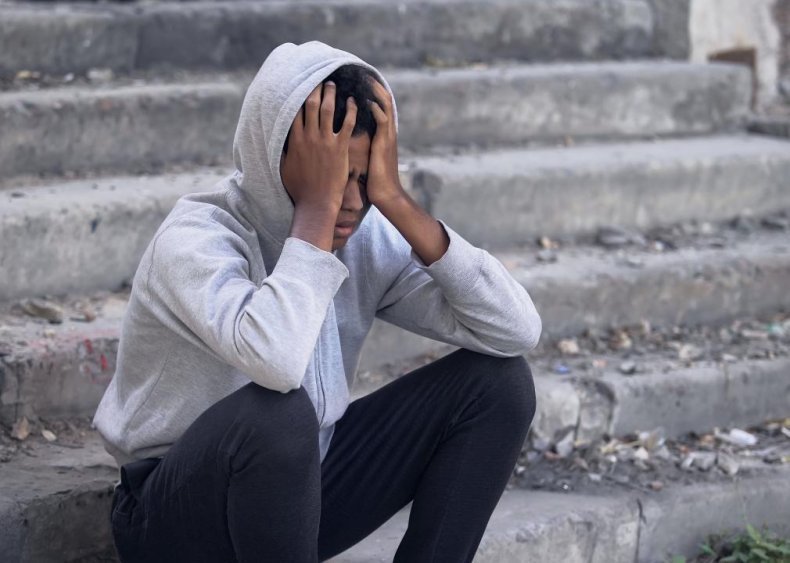
South Carolina
– Frequency of feeling depressed or hopeless (Feb. 2021):
— Rarely: 40.0% (-6.9% from April 2020),
— Occasionally: 20.3% (-3.0% from April 2020),
— Frequently: 10.1% (+2.0% from April 2020),
— Nearly everyday: 8.8% (+0.5% from April 2020),
— Did not report: 20.8% (+7.4% from April 2020)
– Frequency of feeling anxious or on edge (Feb. 2021):
— Rarely: 32.6% (+0.5% from April 2020),
— Occasionally: 24.2% (-7.4% from April 2020),
— Frequently: 9.2% (-0.3% from April 2020),
— Nearly everyday: 13.3% (-0.2% from April 2020),
— Did not report: 20.8% (+7.4% from April 2020)
– Received counseling or therapy (Feb. 2021): yes: 6.8%, no: 69.6%, did not report: 23.5%
– Took prescription medication to help with mental health (Feb. 2021): yes: 16.7%, no: 60.4%, did not report: 22.9%
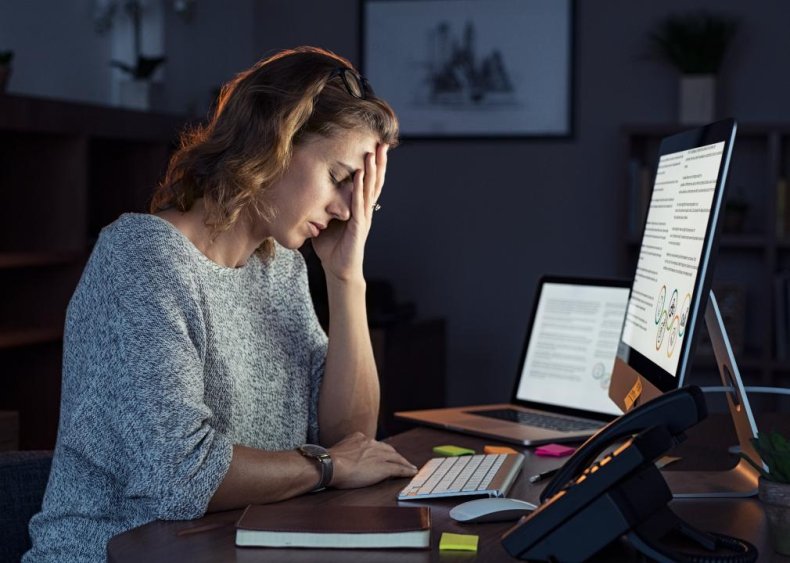
South Dakota
– Frequency of feeling depressed or hopeless (Feb. 2021):
— Rarely: 46.3% (-6.5% from April 2020),
— Occasionally: 23.6% (-3.0% from April 2020),
— Frequently: 7.1% (+1.3% from April 2020),
— Nearly everyday: 6.8% (+2.4% from April 2020),
— Did not report: 16.3% (+5.7% from April 2020)
– Frequency of feeling anxious or on edge (Feb. 2021):
— Rarely: 39.1% (+0.1% from April 2020),
— Occasionally: 23.0% (-6.5% from April 2020),
— Frequently: 11.2% (-3.0% from April 2020),
— Nearly everyday: 10.7% (+4.0% from April 2020),
— Did not report: 16.1% (+5.4% from April 2020)
– Received counseling or therapy (Feb. 2021): yes: 7.0%, no: 74.2%, did not report: 18.8%
– Took prescription medication to help with mental health (Feb. 2021): yes: 15.7%, no: 66.1%, did not report: 18.2%
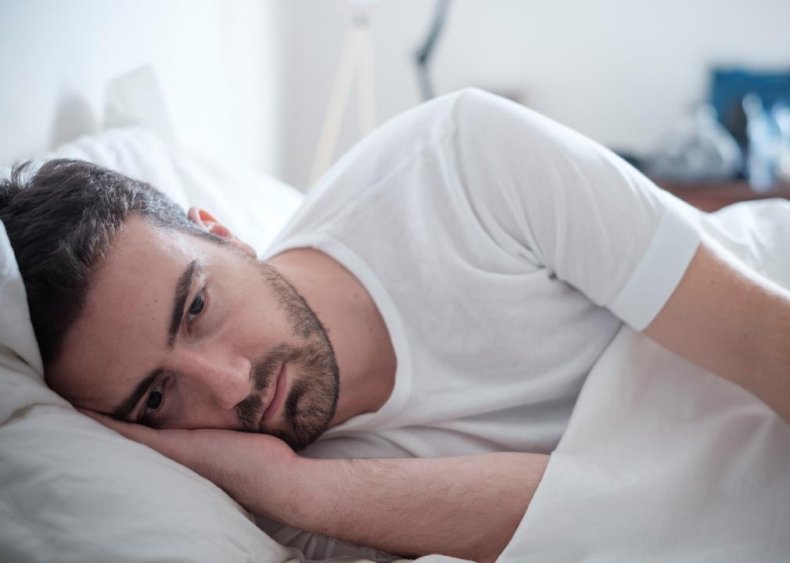
Tennessee
– Frequency of feeling depressed or hopeless (Feb. 2021):
— Rarely: 36.0% (-11.7% from April 2020),
— Occasionally: 23.2% (-5.3% from April 2020),
— Frequently: 8.6% (+0.6% from April 2020),
— Nearly everyday: 10.7% (+1.6% from April 2020),
— Did not report: 21.4% (+14.7% from April 2020)
– Frequency of feeling anxious or on edge (Feb. 2021):
— Rarely: 27.7% (-8.7% from April 2020),
— Occasionally: 23.3% (-9.5% from April 2020),
— Frequently: 11.4% (+1.2% from April 2020),
— Nearly everyday: 16.3% (+3.1% from April 2020),
— Did not report: 21.2% (+13.9% from April 2020)
– Received counseling or therapy (Feb. 2021): yes: 8.3%, no: 68.7%, did not report: 22.9%
– Took prescription medication to help with mental health (Feb. 2021): yes: 17.9%, no: 59.1%, did not report: 23.0%
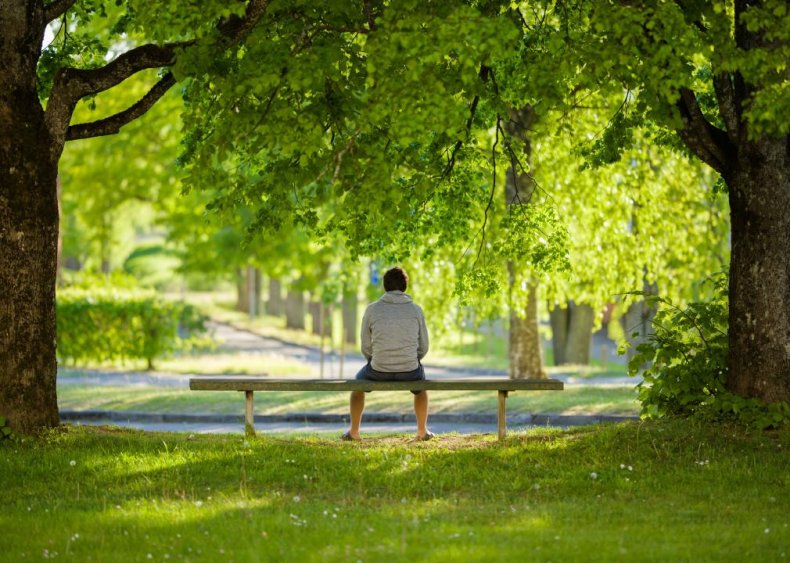
Texas
– Frequency of feeling depressed or hopeless (Feb. 2021):
— Rarely: 34.5% (-15.0% from April 2020),
— Occasionally: 21.2% (-1.9% from April 2020),
— Frequently: 8.0% (-0.5% from April 2020),
— Nearly everyday: 8.3% (-0.8% from April 2020),
— Did not report: 28.0% (+18.2% from April 2020)
– Frequency of feeling anxious or on edge (Feb. 2021):
— Rarely: 25.9% (-8.8% from April 2020),
— Occasionally: 22.4% (-7.6% from April 2020),
— Frequently: 8.3% (-2.3% from April 2020),
— Nearly everyday: 15.5% (+0.7% from April 2020),
— Did not report: 27.8% (+18.0% from April 2020)
– Received counseling or therapy (Feb. 2021): yes: 6.0%, no: 63.3%, did not report: 30.7%
– Took prescription medication to help with mental health (Feb. 2021): yes: 13.3%, no: 56.0%, did not report: 30.7%
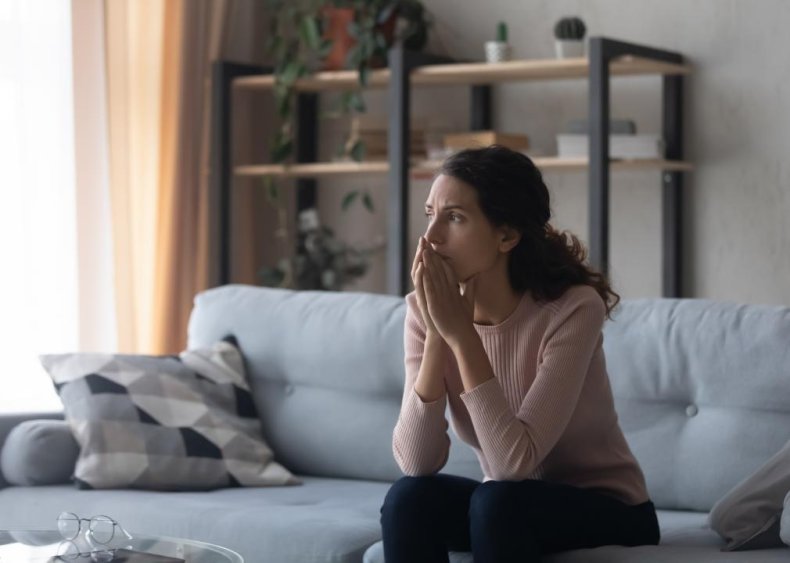
Utah
– Frequency of feeling depressed or hopeless (Feb. 2021):
— Rarely: 42.0% (-4.9% from April 2020),
— Occasionally: 23.9% (-5.8% from April 2020),
— Frequently: 9.1% (+0.4% from April 2020),
— Nearly everyday: 8.8% (+2.3% from April 2020),
— Did not report: 16.2% (+8.0% from April 2020)
– Frequency of feeling anxious or on edge (Feb. 2021):
— Rarely: 32.1% (-1.6% from April 2020),
— Occasionally: 24.9% (-6.9% from April 2020),
— Frequently: 9.5% (-2.4% from April 2020),
— Nearly everyday: 17.1% (+2.8% from April 2020),
— Did not report: 16.4% (+8.1% from April 2020)
– Received counseling or therapy (Feb. 2021): yes: 12.7%, no: 69.9%, did not report: 17.4%
– Took prescription medication to help with mental health (Feb. 2021): yes: 23.0%, no: 59.5%, did not report: 17.5%
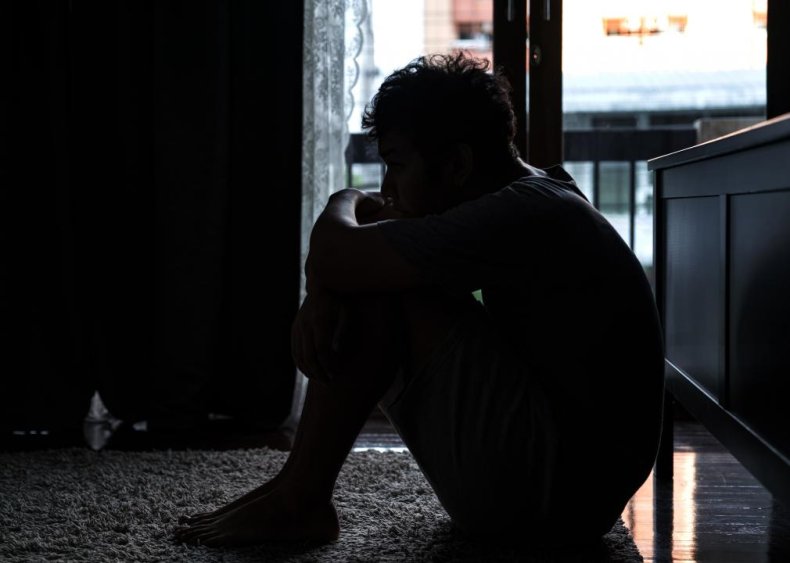
Vermont
– Frequency of feeling depressed or hopeless (Feb. 2021):
— Rarely: 44.0% (-0.9% from April 2020),
— Occasionally: 21.4% (-11.0% from April 2020),
— Frequently: 10.1% (-0.1% from April 2020),
— Nearly everyday: 10.9% (+4.5% from April 2020),
— Did not report: 13.6% (+7.6% from April 2020)
– Frequency of feeling anxious or on edge (Feb. 2021):
— Rarely: 33.3% (+2.8% from April 2020),
— Occasionally: 27.2% (-8.2% from April 2020),
— Frequently: 10.8% (-3.3% from April 2020),
— Nearly everyday: 15.0% (+1.2% from April 2020),
— Did not report: 13.7% (+7.5% from April 2020)
– Received counseling or therapy (Feb. 2021): yes: 10.1%, no: 75.4%, did not report: 14.4%
– Took prescription medication to help with mental health (Feb. 2021): yes: 17.6%, no: 67.8%, did not report: 14.6%
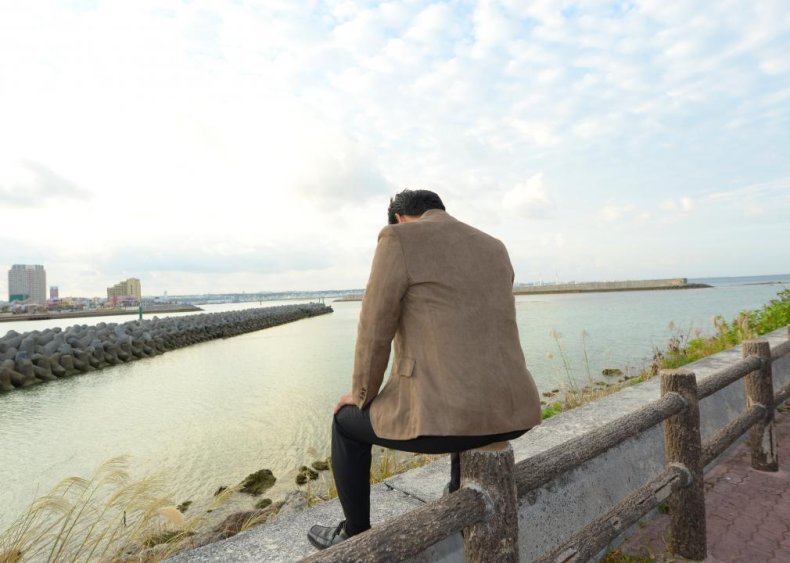
Virginia
– Frequency of feeling depressed or hopeless (Feb. 2021):
— Rarely: 41.2% (-8.8% from April 2020),
— Occasionally: 23.7% (-2.5% from April 2020),
— Frequently: 7.6% (+0.8% from April 2020),
— Nearly everyday: 9.0% (+1.5% from April 2020),
— Did not report: 18.5% (+9.1% from April 2020)
– Frequency of feeling anxious or on edge (Feb. 2021):
— Rarely: 31.9% (-3.1% from April 2020),
— Occasionally: 25.6% (-5.3% from April 2020),
— Frequently: 10.7% (-0.8% from April 2020),
— Nearly everyday: 13.7% (+0.2% from April 2020),
— Did not report: 18.2% (+8.9% from April 2020)
– Received counseling or therapy (Feb. 2021): yes: 8.3%, no: 70.5%, did not report: 21.2%
– Took prescription medication to help with mental health (Feb. 2021): yes: 15.5%, no: 63.2%, did not report: 21.3%
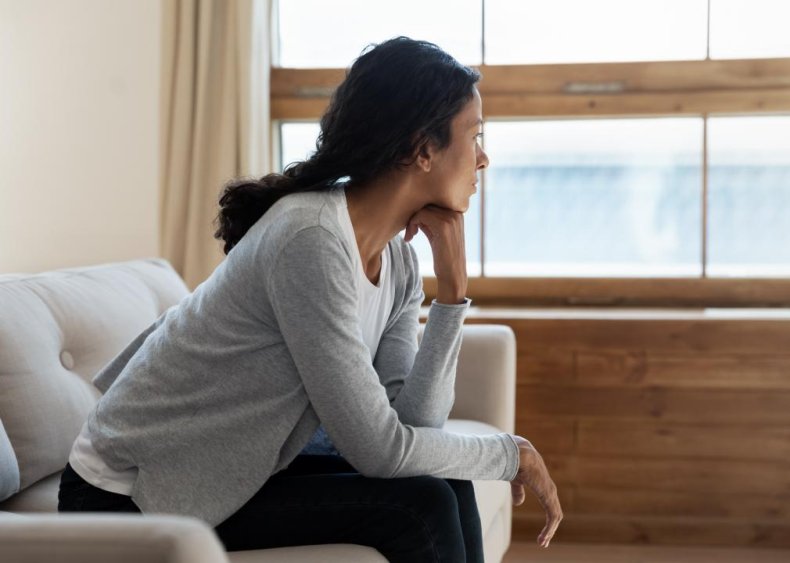
Washington
– Frequency of feeling depressed or hopeless (Feb. 2021):
— Rarely: 39.6% (-6.9% from April 2020),
— Occasionally: 28.0% (-0.9% from April 2020),
— Frequently: 8.5% (0.0% from April 2020),
— Nearly everyday: 9.3% (+1.4% from April 2020),
— Did not report: 14.6% (+6.4% from April 2020)
– Frequency of feeling anxious or on edge (Feb. 2021):
— Rarely: 30.4% (-0.5% from April 2020),
— Occasionally: 26.5% (-6.9% from April 2020),
— Frequently: 11.7% (-0.5% from April 2020),
— Nearly everyday: 17.1% (+1.7% from April 2020),
— Did not report: 14.3% (+6.2% from April 2020)
– Received counseling or therapy (Feb. 2021): yes: 10.4%, no: 73.4%, did not report: 16.2%
– Took prescription medication to help with mental health (Feb. 2021): yes: 18.0%, no: 65.7%, did not report: 16.4%
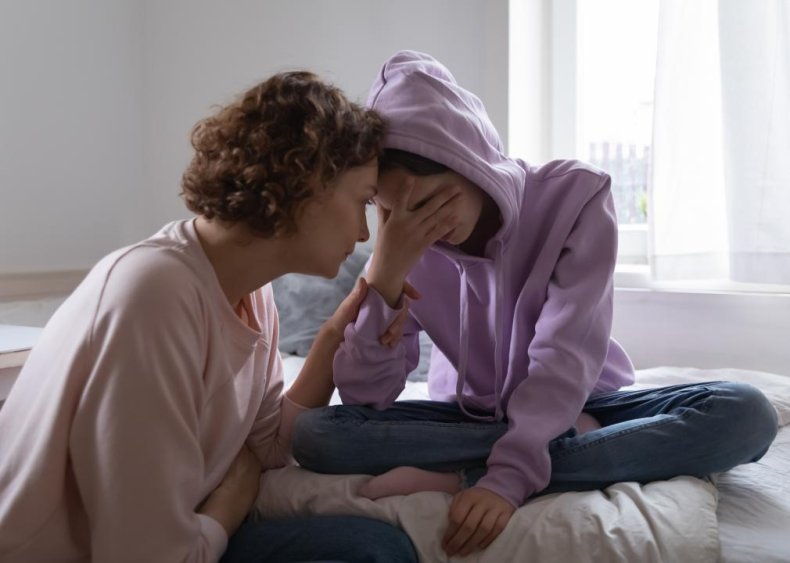
Washington D.C.
– Frequency of feeling depressed or hopeless (Feb. 2021):
— Rarely: 38.5% (-0.1% from April 2020),
— Occasionally: 31.9% (-1.6% from April 2020),
— Frequently: 6.8% (-4.3% from April 2020),
— Nearly everyday: 7.3% (-2.1% from April 2020),
— Did not report: 15.5% (+8.1% from April 2020)
– Frequency of feeling anxious or on edge (Feb. 2021):
— Rarely: 26.9% (+1.0% from April 2020),
— Occasionally: 29.5% (-8.2% from April 2020),
— Frequently: 11.9% (-1.9% from April 2020),
— Nearly everyday: 16.2% (+1.3% from April 2020),
— Did not report: 15.5% (+7.9% from April 2020)
– Received counseling or therapy (Feb. 2021): yes: 15.5%, no: 66.5%, did not report: 18.0%
– Took prescription medication to help with mental health (Feb. 2021): yes: 15.2%, no: 66.8%, did not report: 18.0%
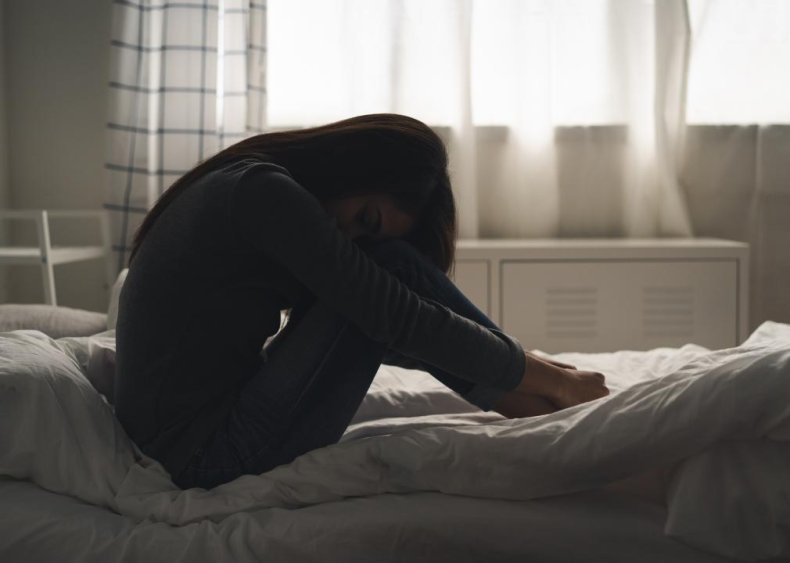
West Virginia
– Frequency of feeling depressed or hopeless (Feb. 2021):
— Rarely: 34.2% (-10.3% from April 2020),
— Occasionally: 25.2% (-3.6% from April 2020),
— Frequently: 6.0% (-1.8% from April 2020),
— Nearly everyday: 11.9% (+2.2% from April 2020),
— Did not report: 22.8% (+13.5% from April 2020)
– Frequency of feeling anxious or on edge (Feb. 2021):
— Rarely: 31.1% (-4.0% from April 2020),
— Occasionally: 22.0% (-8.1% from April 2020),
— Frequently: 7.4% (-3.5% from April 2020),
— Nearly everyday: 16.7% (+2.1% from April 2020),
— Did not report: 22.8% (+13.5% from April 2020)
– Received counseling or therapy (Feb. 2021): yes: 6.1%, no: 69.1%, did not report: 24.7%
– Took prescription medication to help with mental health (Feb. 2021): yes: 21.0%, no: 54.3%, did not report: 24.7%
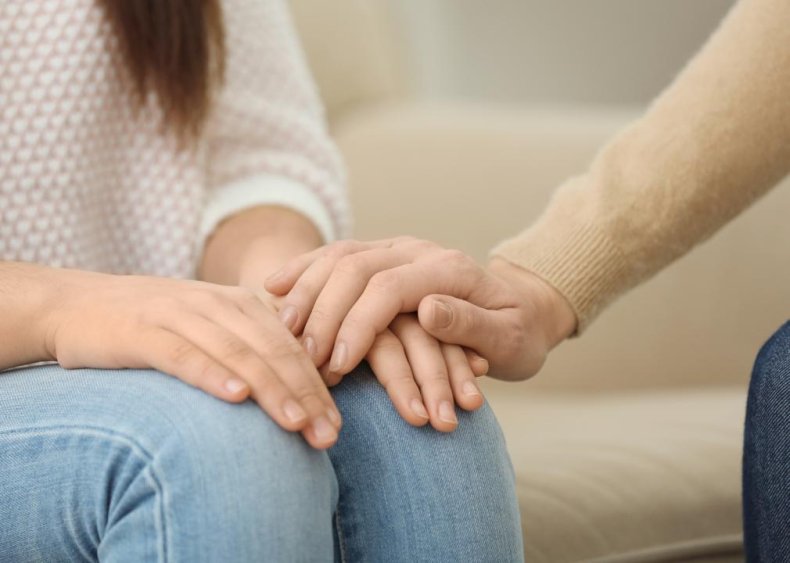
Wisconsin
– Frequency of feeling depressed or hopeless (Feb. 2021):
— Rarely: 47.0% (+0.3% from April 2020),
— Occasionally: 20.4% (-6.2% from April 2020),
— Frequently: 7.9% (+0.7% from April 2020),
— Nearly everyday: 7.3% (-2.2% from April 2020),
— Did not report: 17.4% (+7.4% from April 2020)
– Frequency of feeling anxious or on edge (Feb. 2021):
— Rarely: 38.6% (+2.8% from April 2020),
— Occasionally: 23.9% (-6.7% from April 2020),
— Frequently: 7.9% (-1.2% from April 2020),
— Nearly everyday: 12.7% (-1.9% from April 2020),
— Did not report: 17.0% (+7.0% from April 2020)
– Received counseling or therapy (Feb. 2021): yes: 5.9%, no: 74.2%, did not report: 19.9%
– Took prescription medication to help with mental health (Feb. 2021): yes: 17.3%, no: 62.8%, did not report: 19.8%
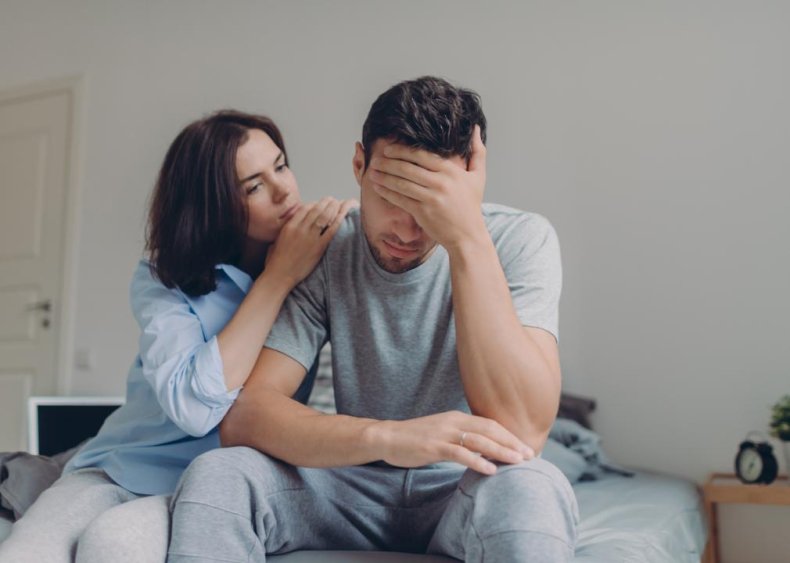
Wyoming
– Frequency of feeling depressed or hopeless (Feb. 2021):
— Rarely: 34.7% (-12.7% from April 2020),
— Occasionally: 25.6% (-5.6% from April 2020),
— Frequently: 8.3% (-0.4% from April 2020),
— Nearly everyday: 10.9% (+5.1% from April 2020),
— Did not report: 20.5% (+13.5% from April 2020)
– Frequency of feeling anxious or on edge (Feb. 2021):
— Rarely: 34.8% (-4.1% from April 2020),
— Occasionally: 17.4% (-13.1% from April 2020),
— Frequently: 9.9% (-1.6% from April 2020),
— Nearly everyday: 17.1% (+5.0% from April 2020),
— Did not report: 20.8% (+13.8% from April 2020)
– Received counseling or therapy (Feb. 2021): yes: 8.2%, no: 70.6%, did not report: 21.1%
– Took prescription medication to help with mental health (Feb. 2021): yes: 18.5%, no: 61.0%, did not report: 20.5%
If you have thoughts of suicide, confidential help is available for free at the National Suicide Prevention Lifeline. Call 1-800-273-8255. The line is available 24 hours every day.
